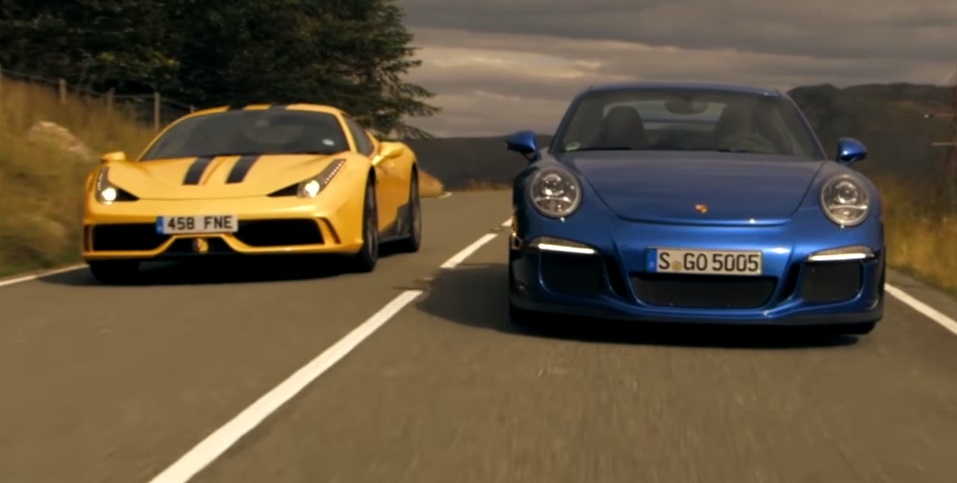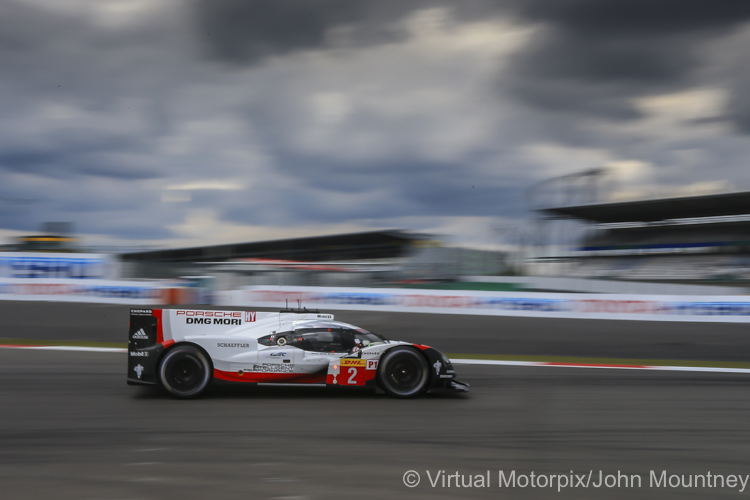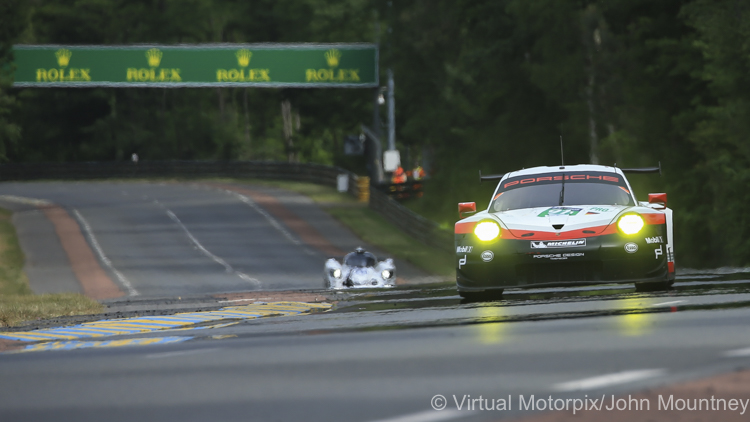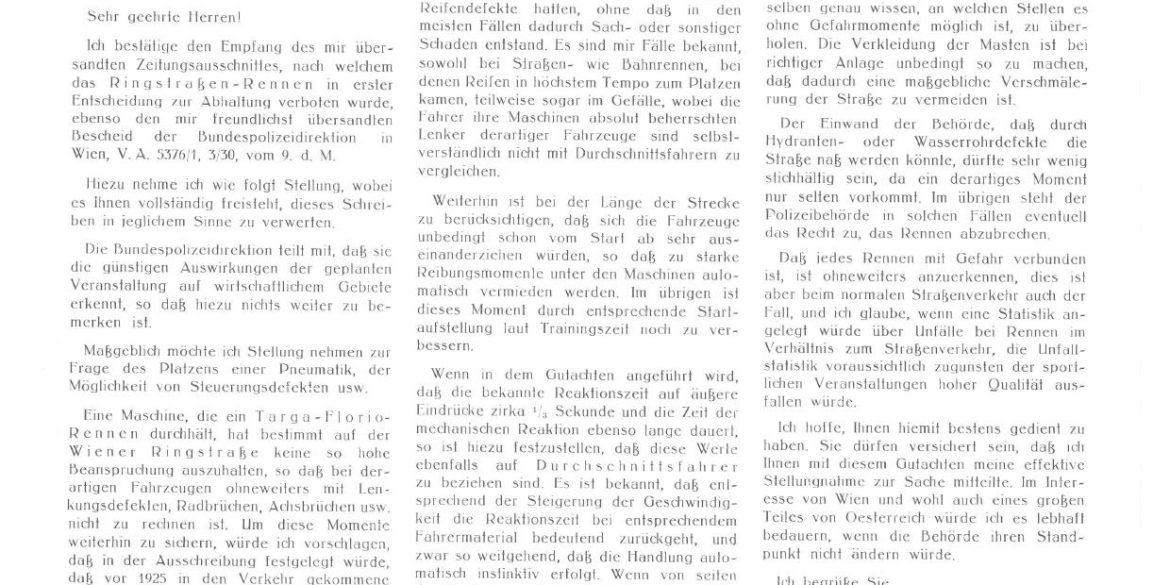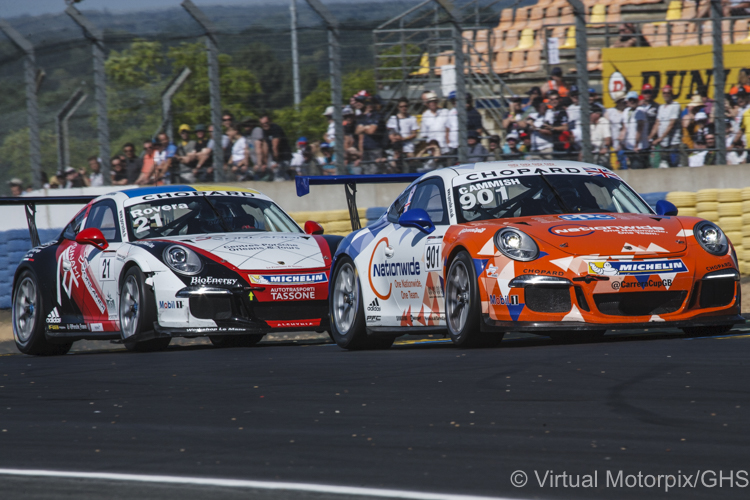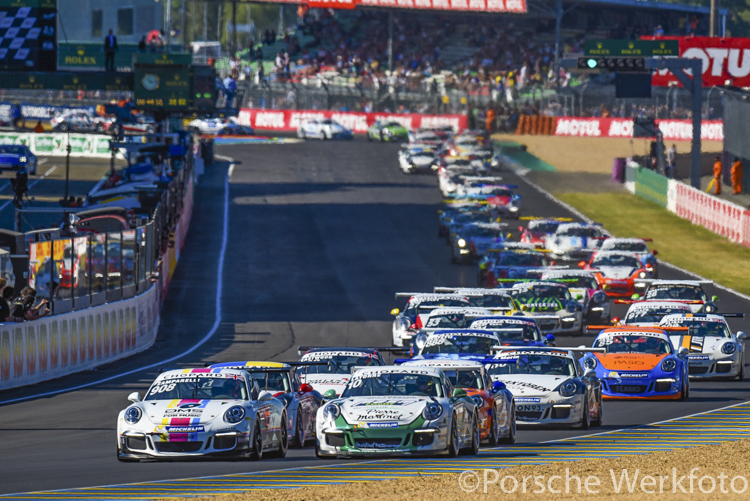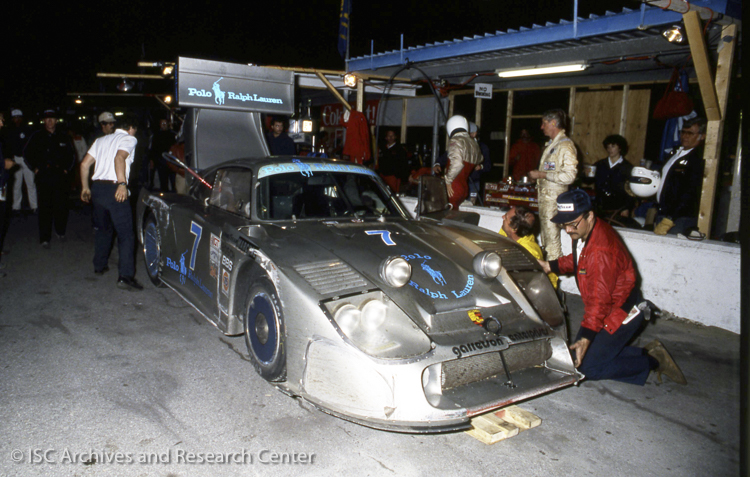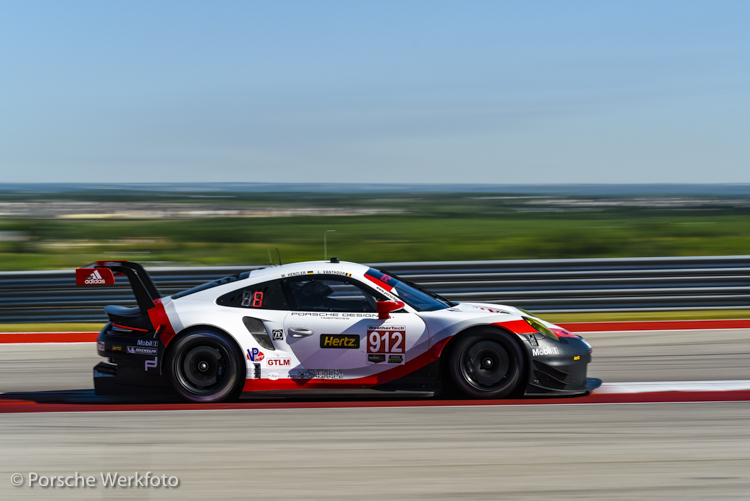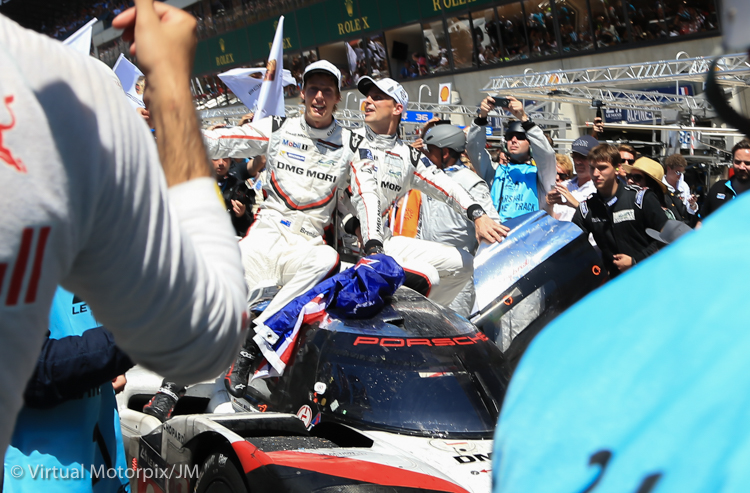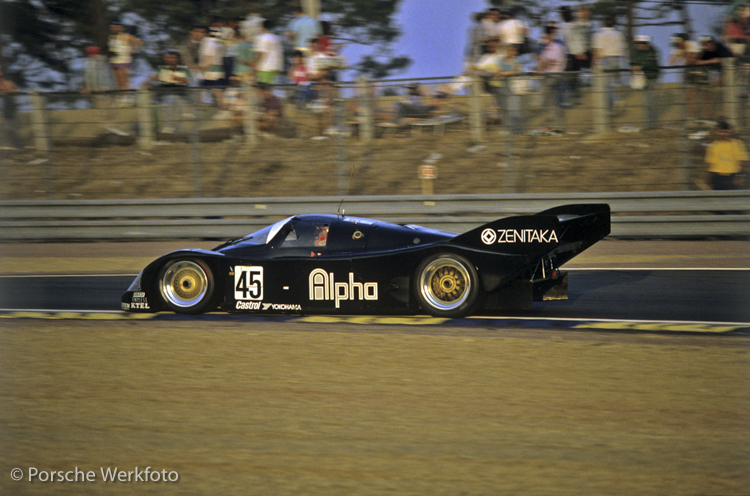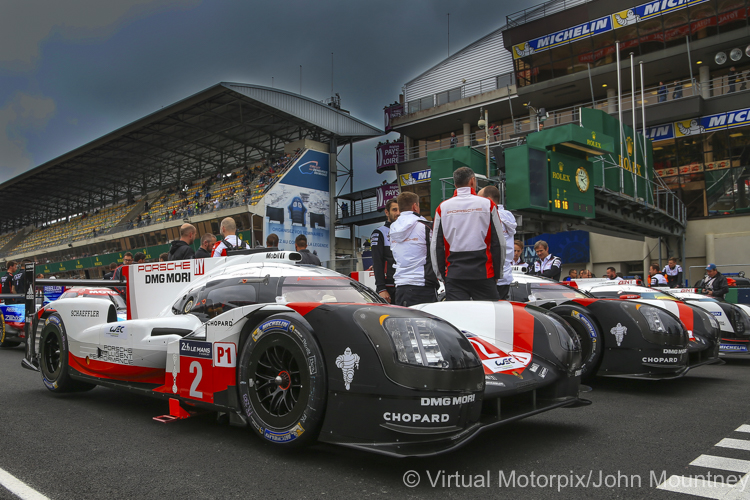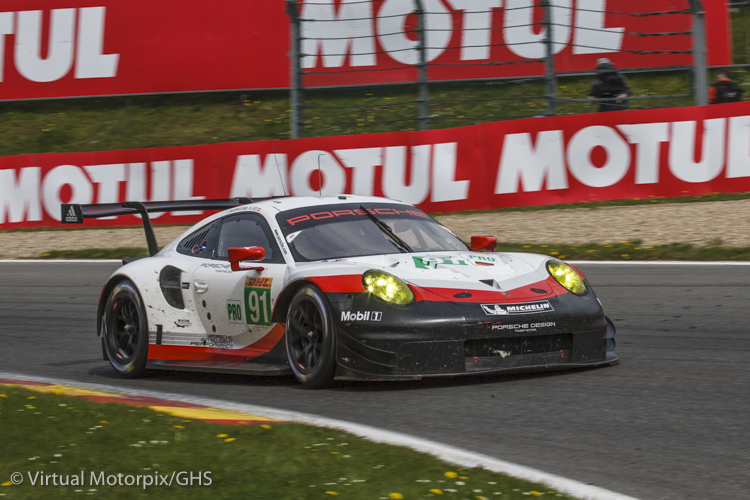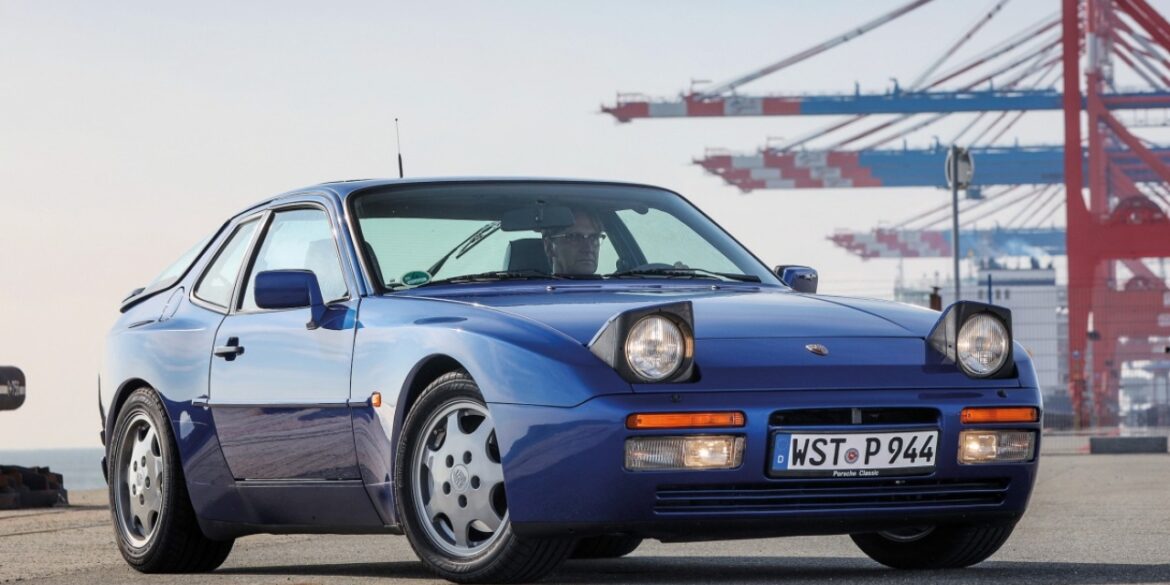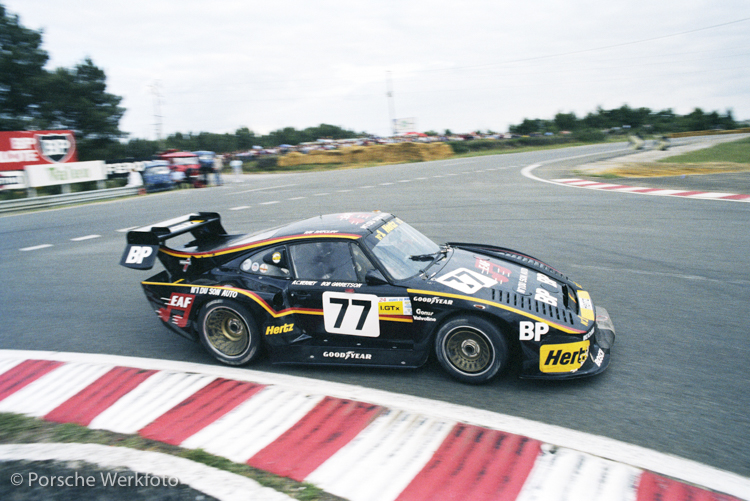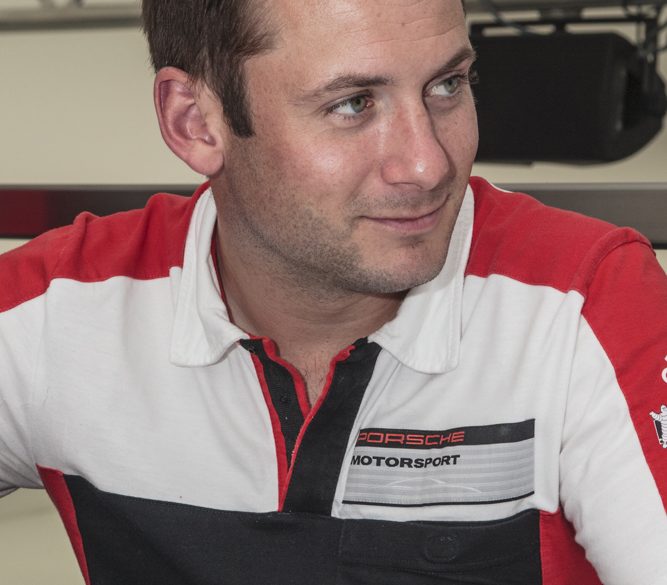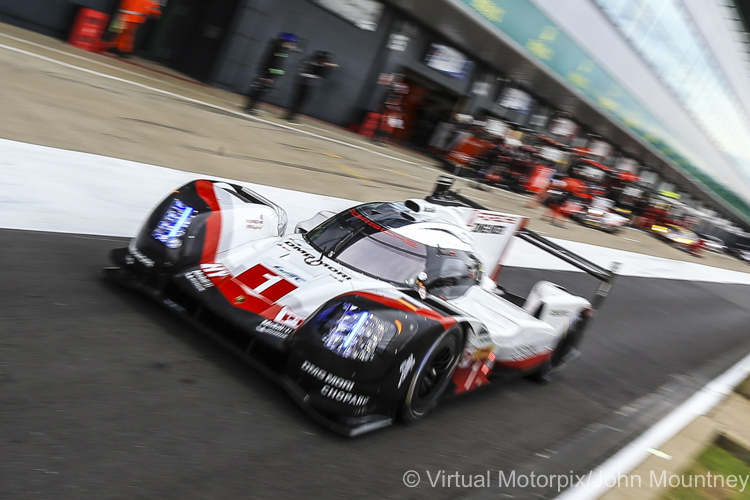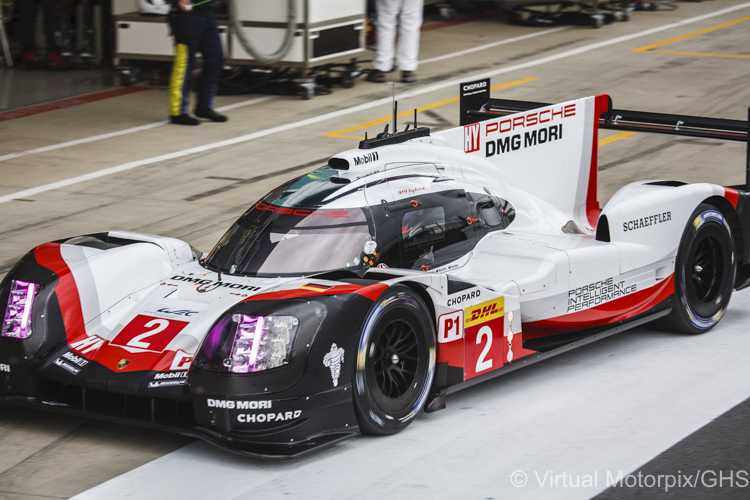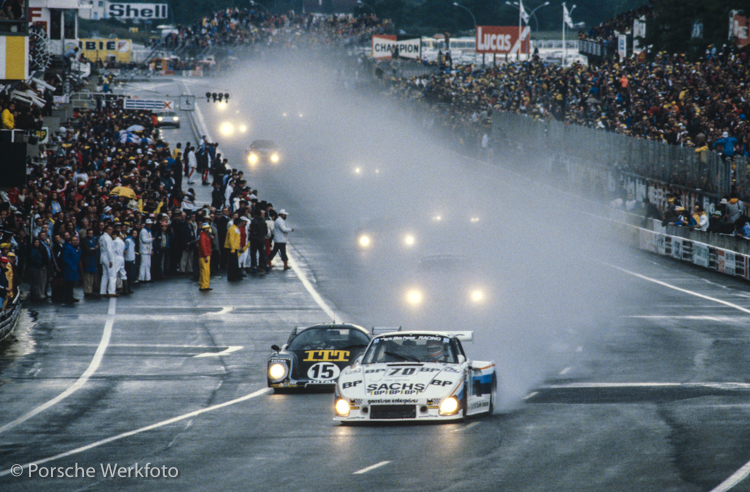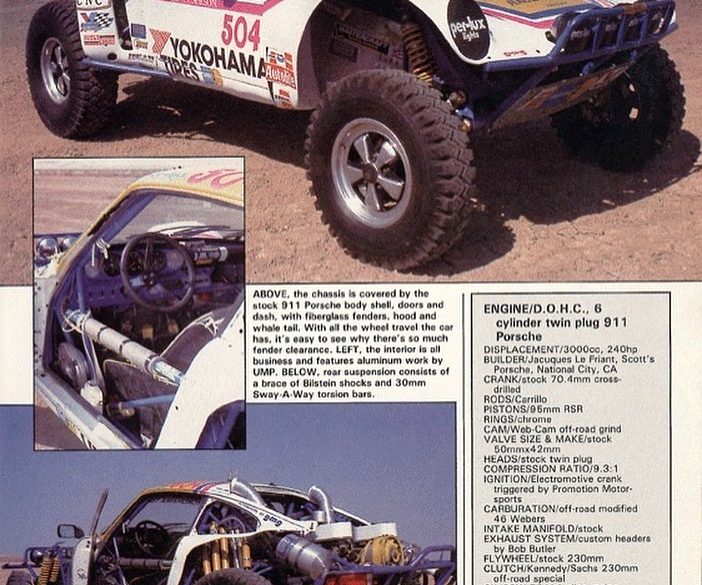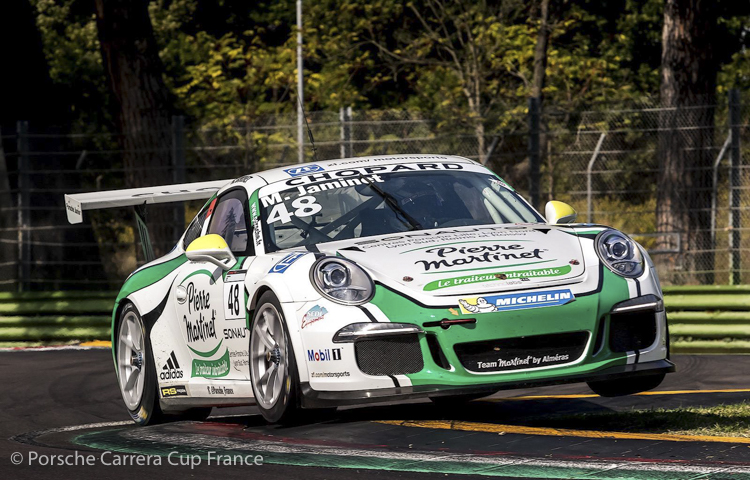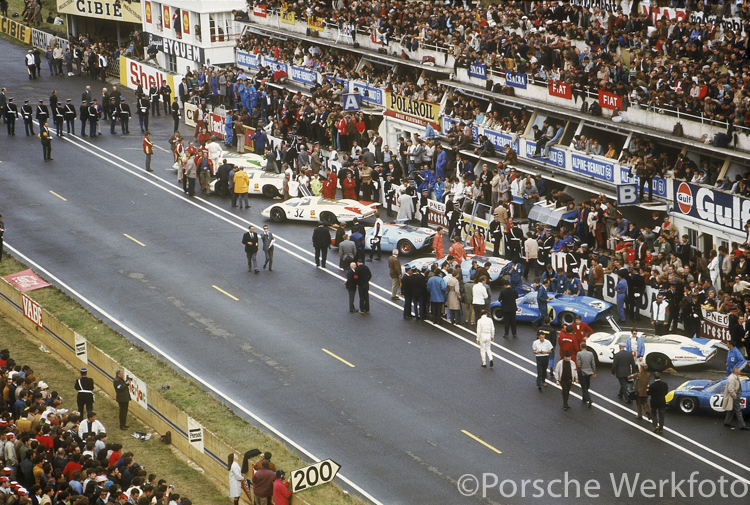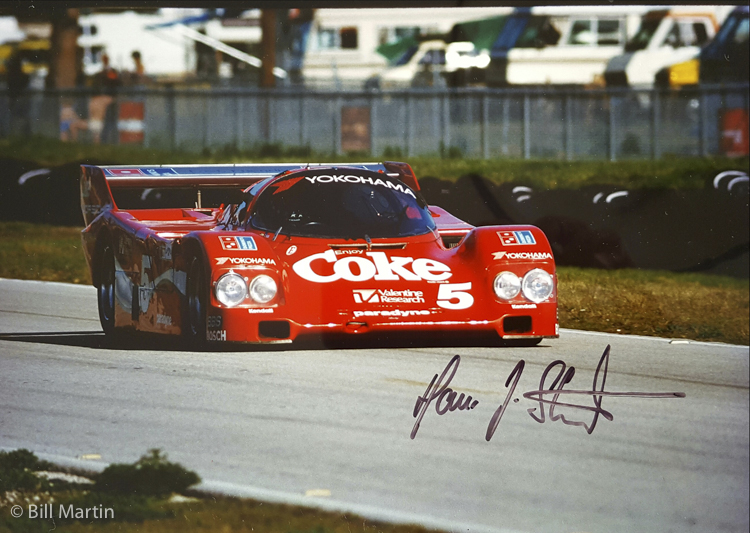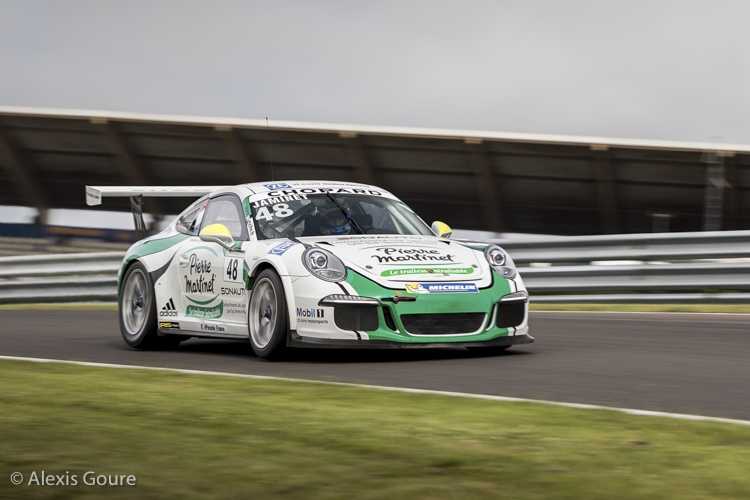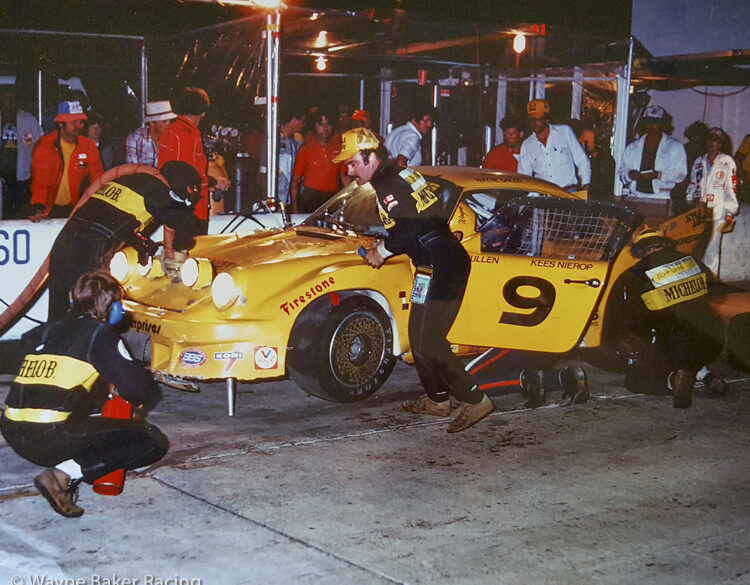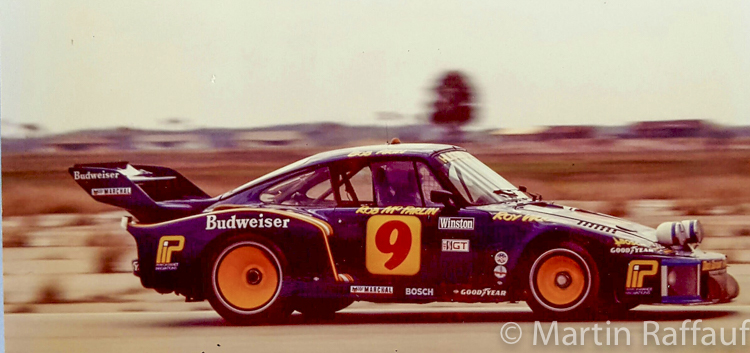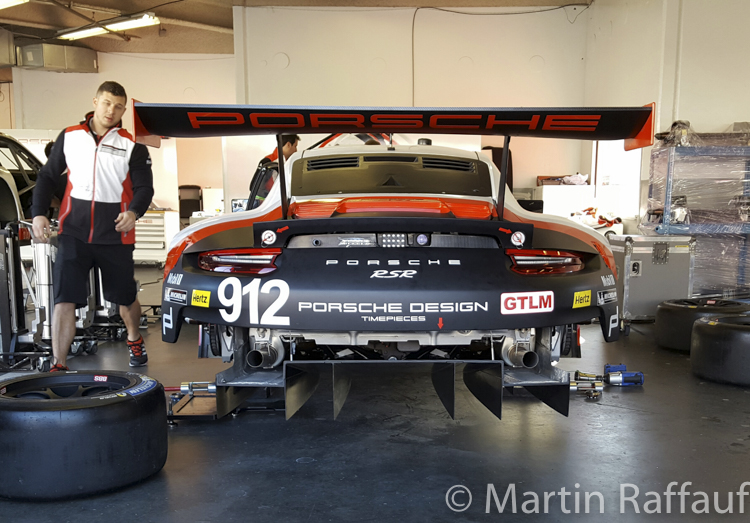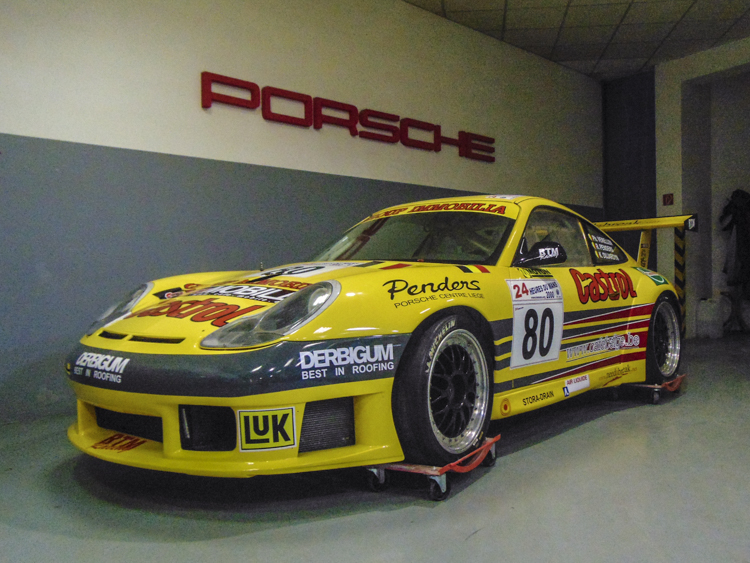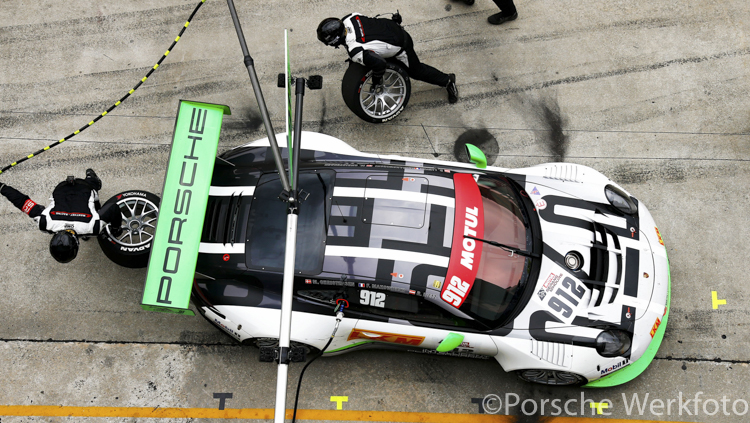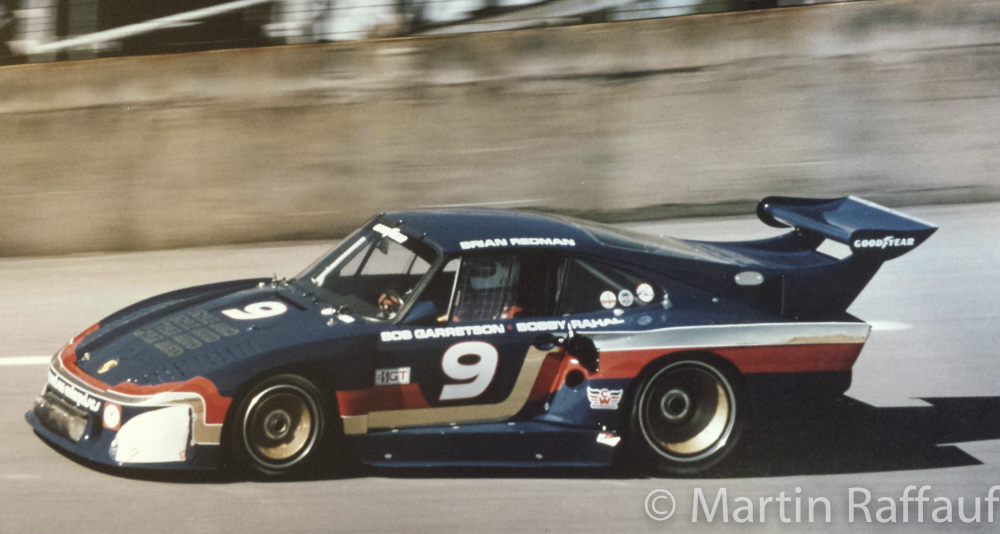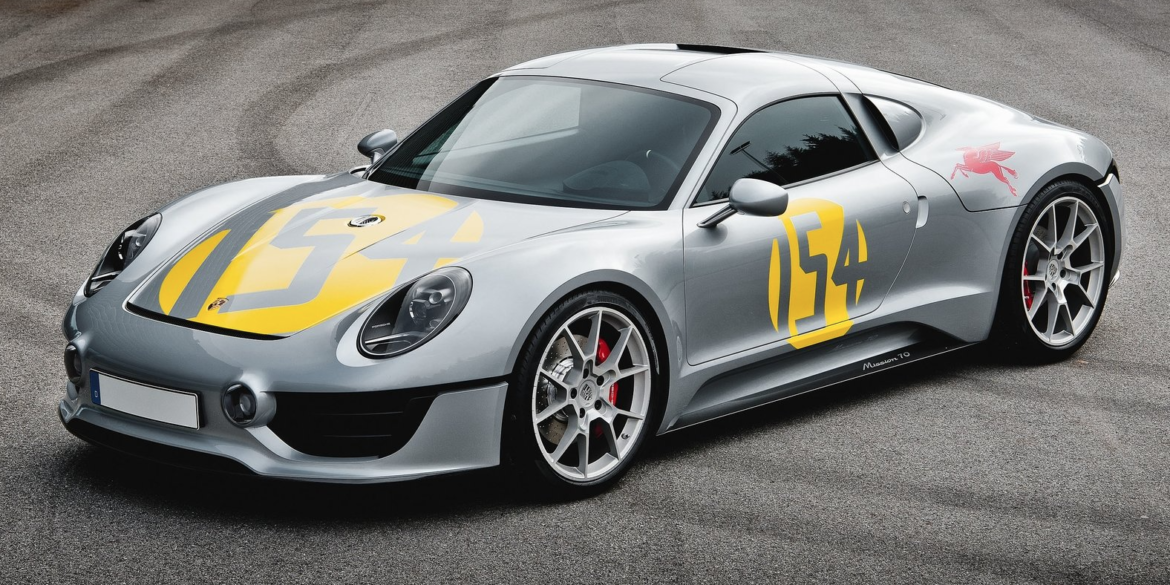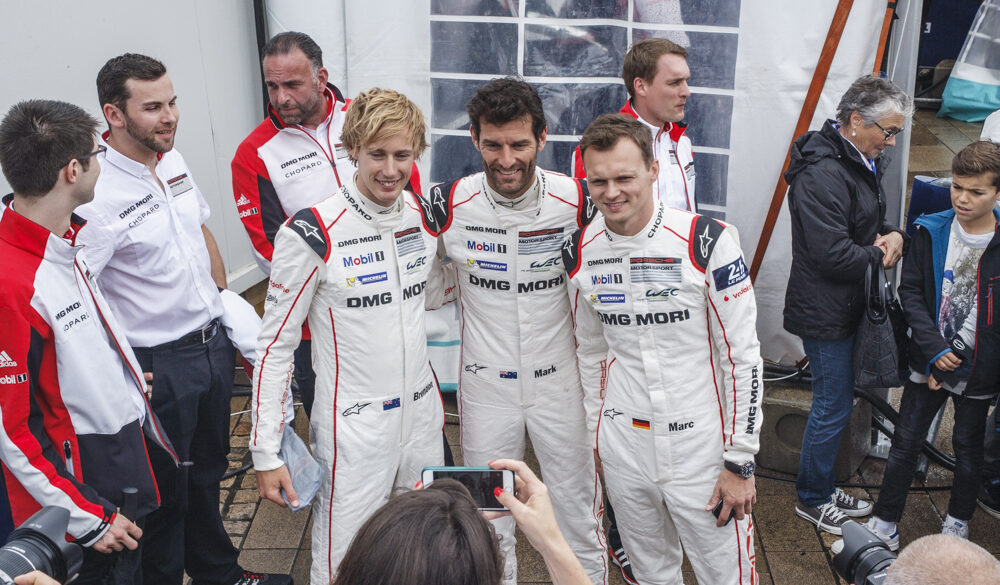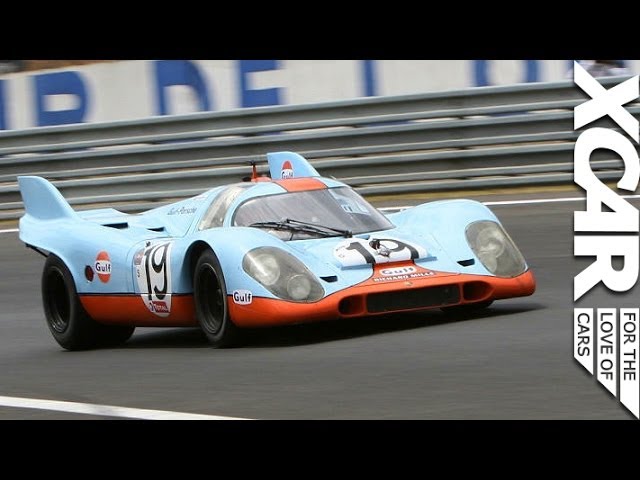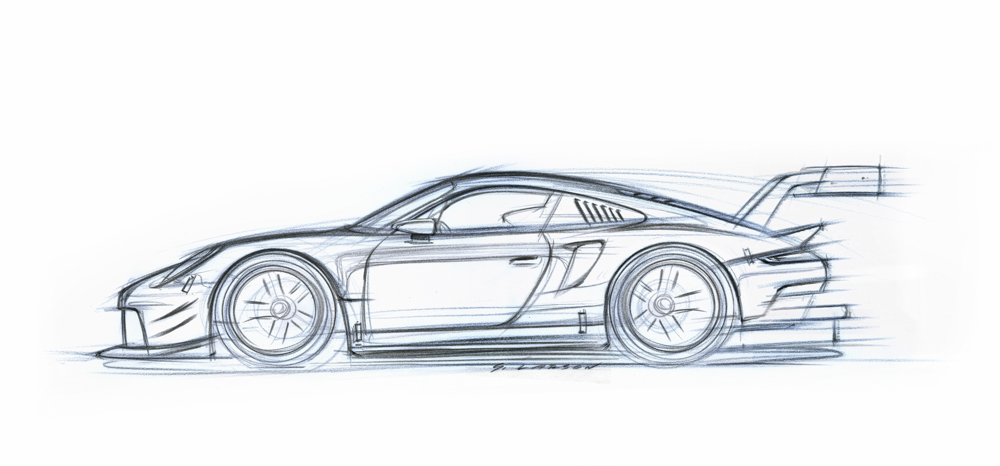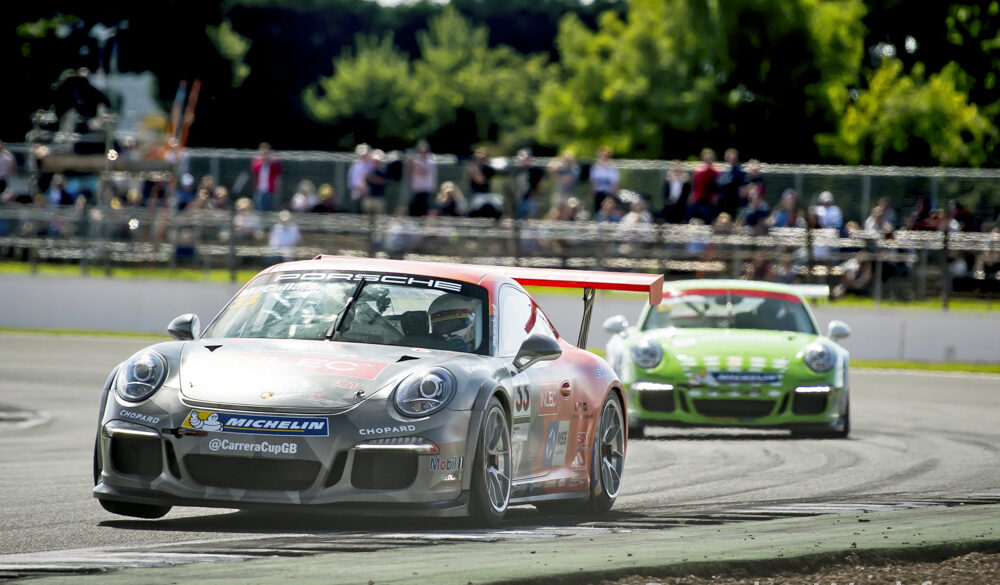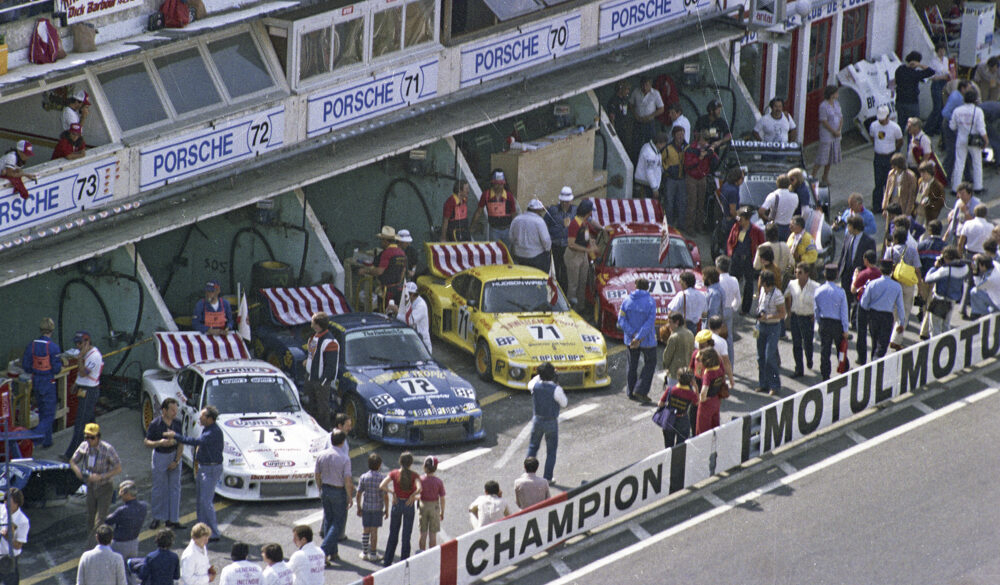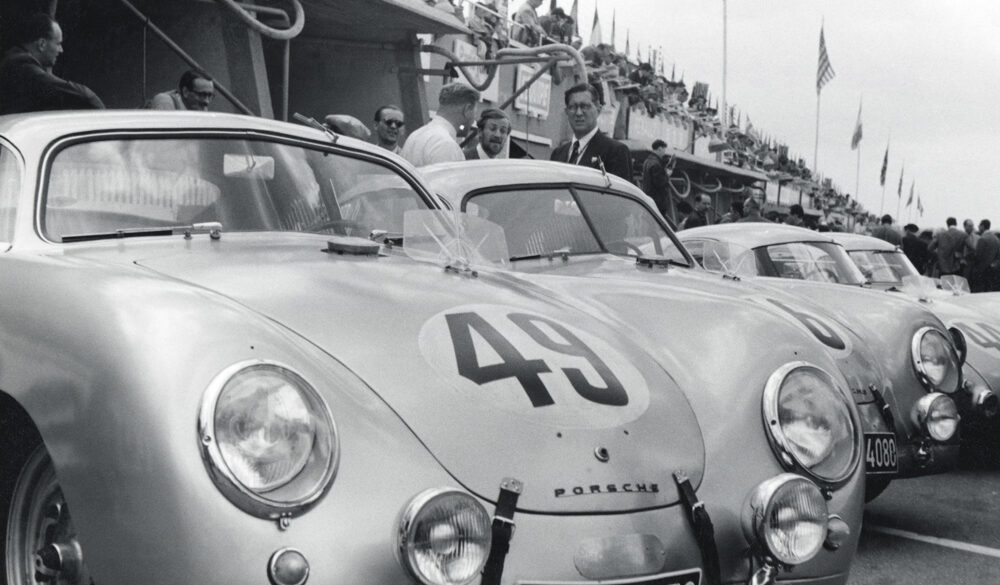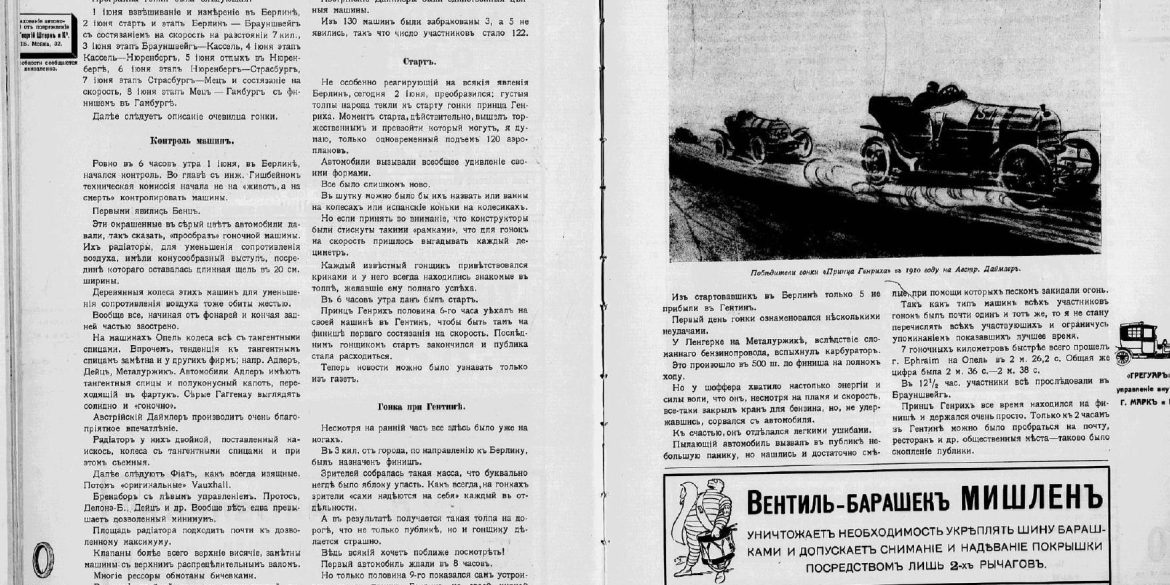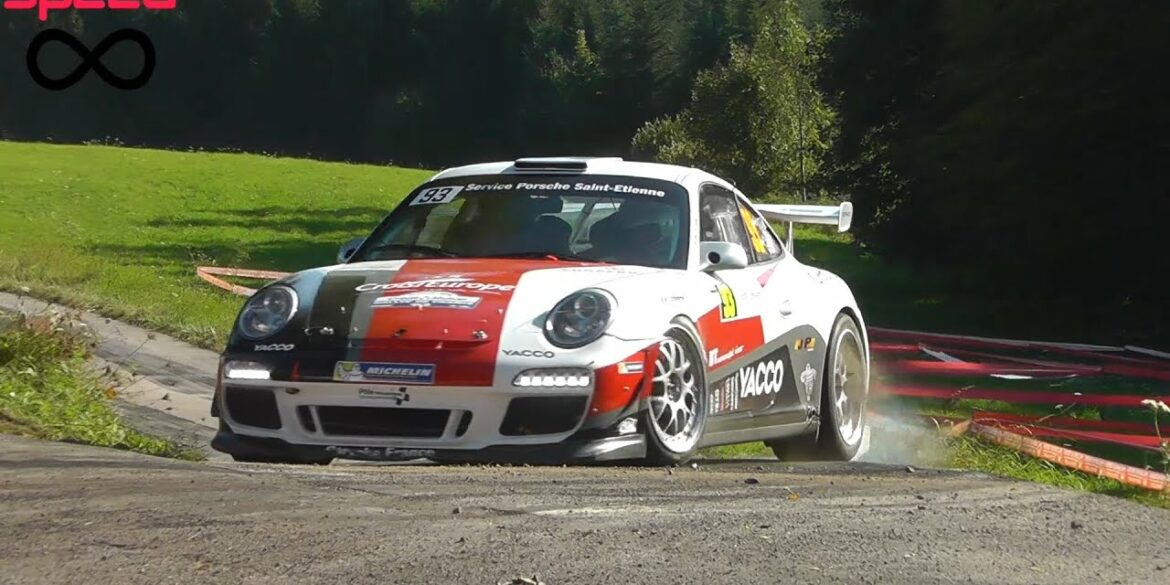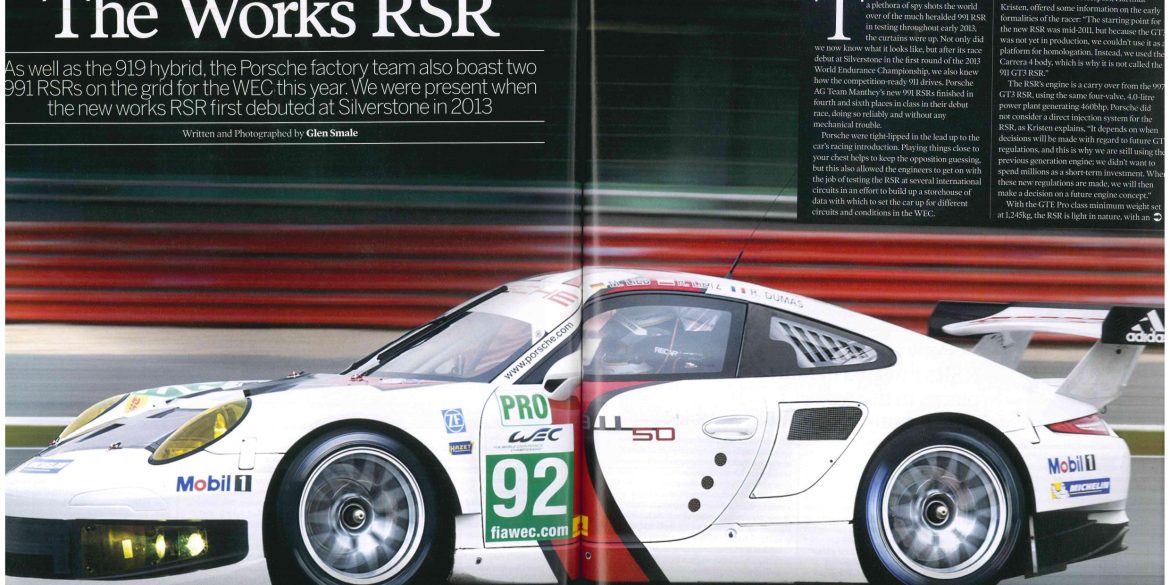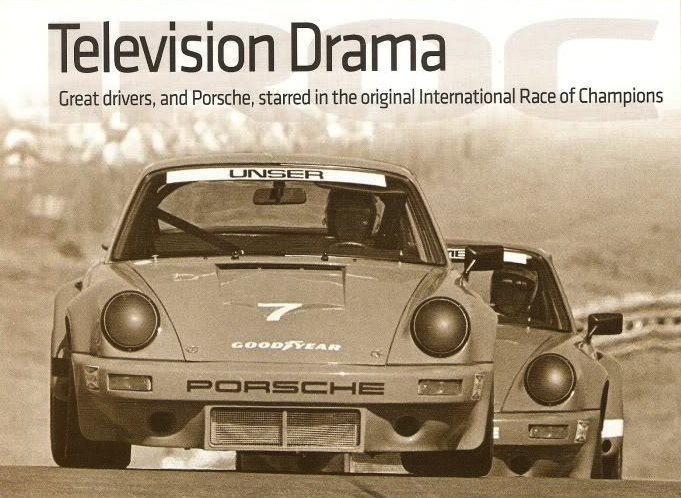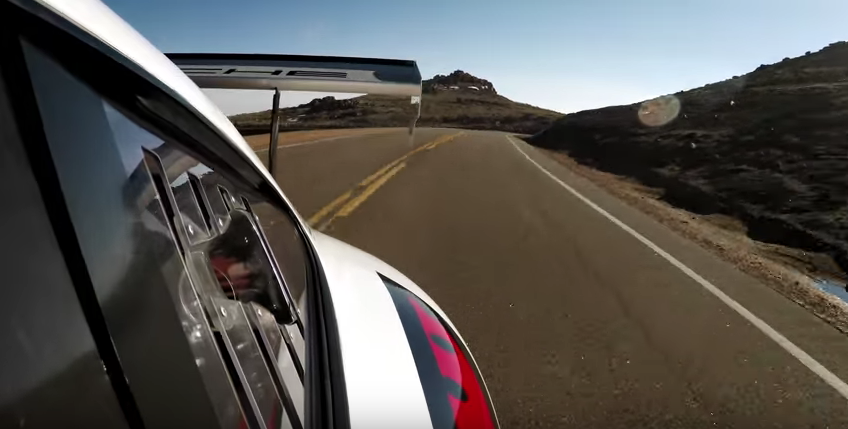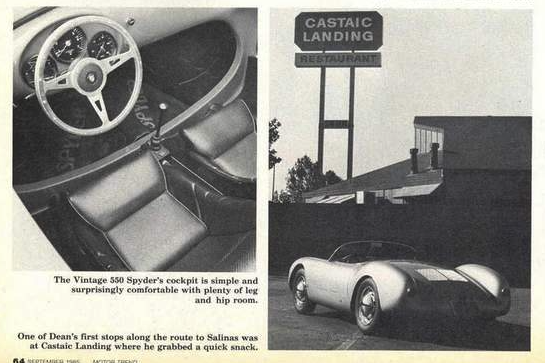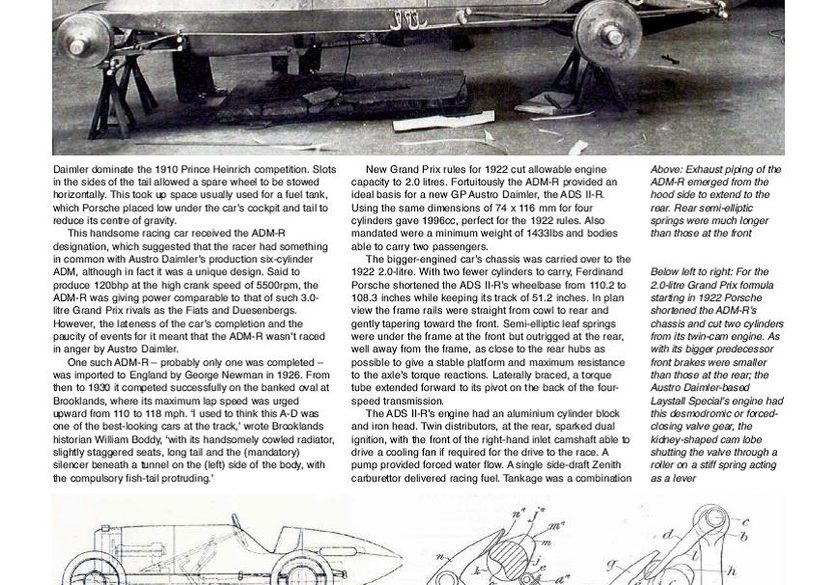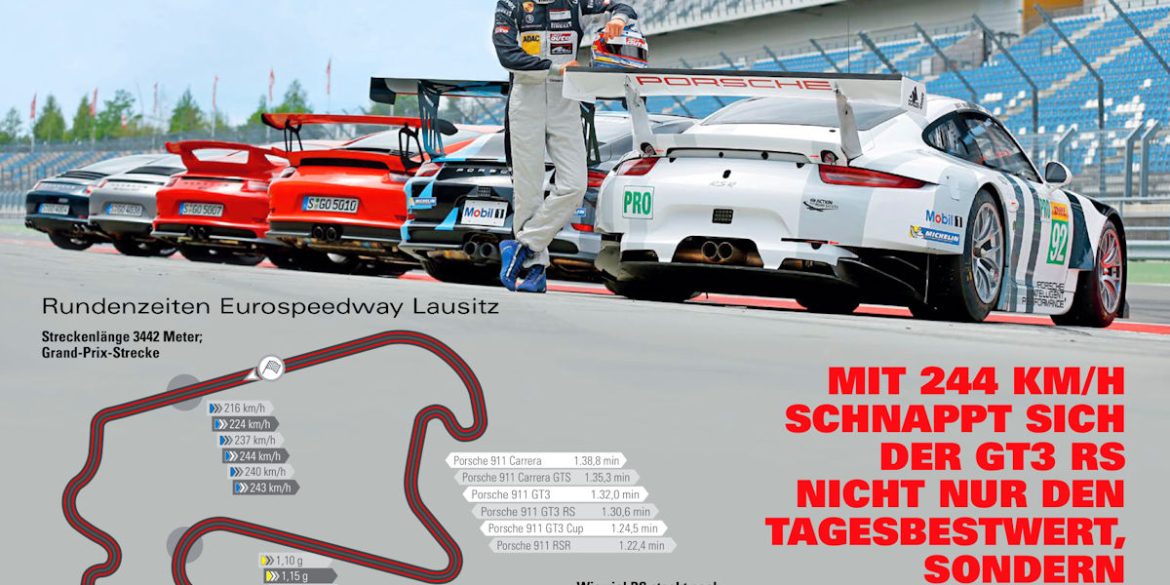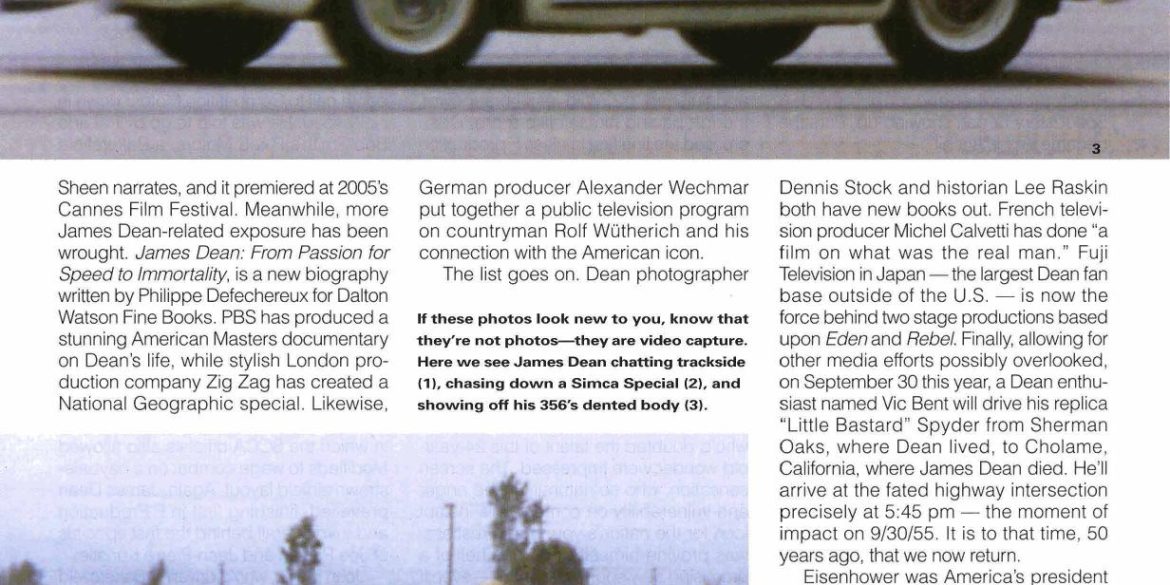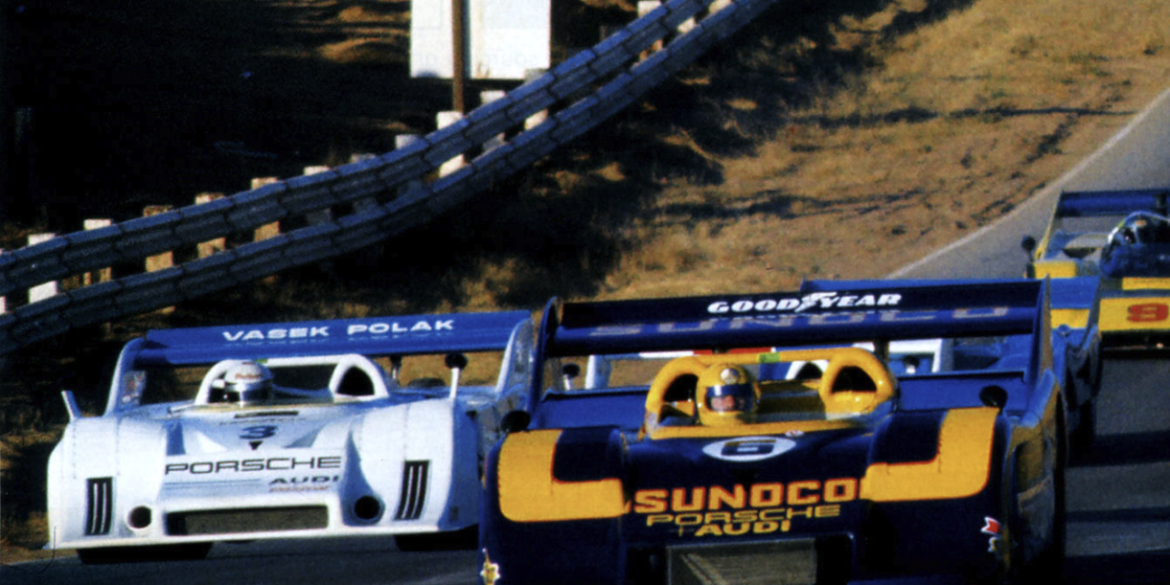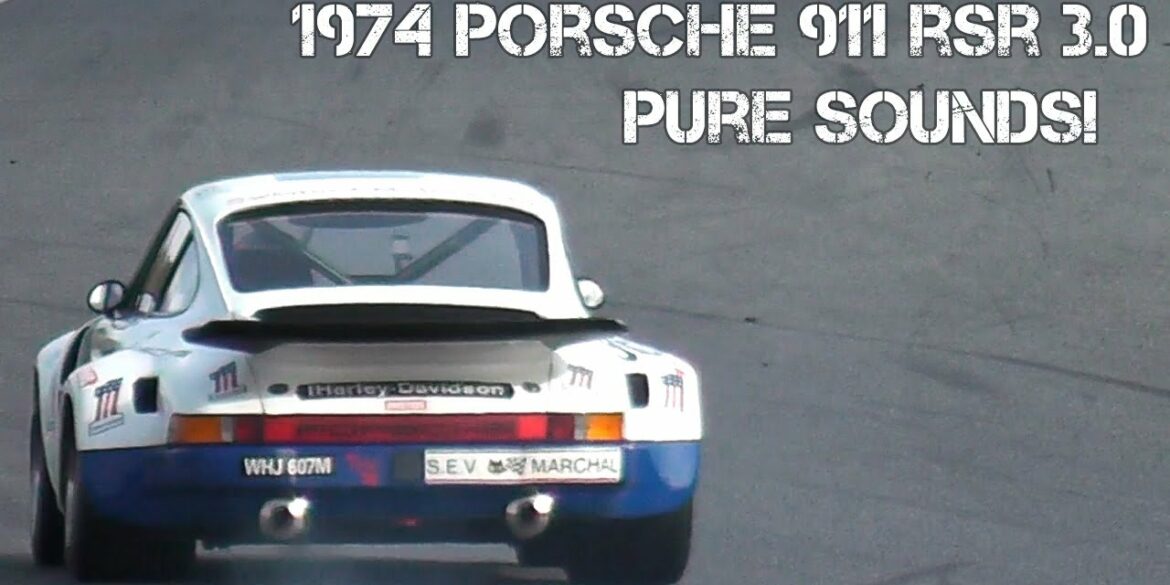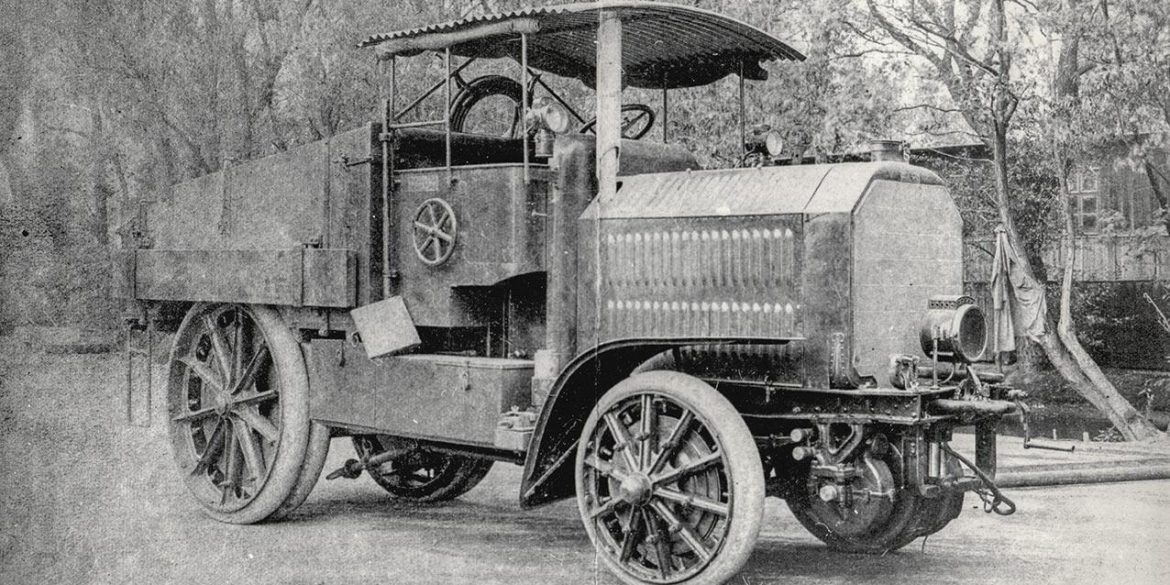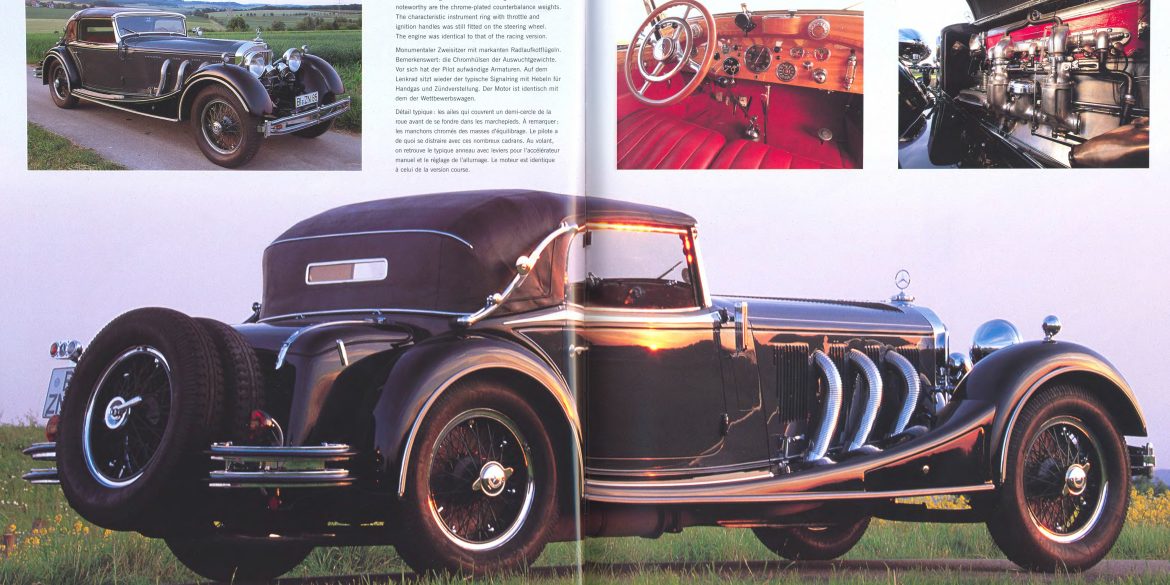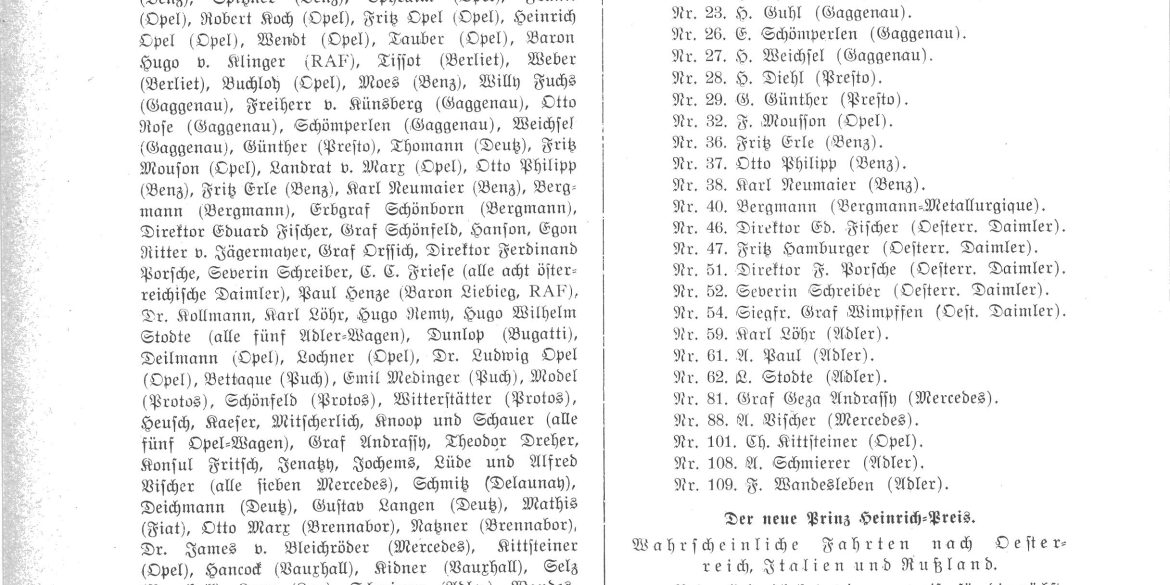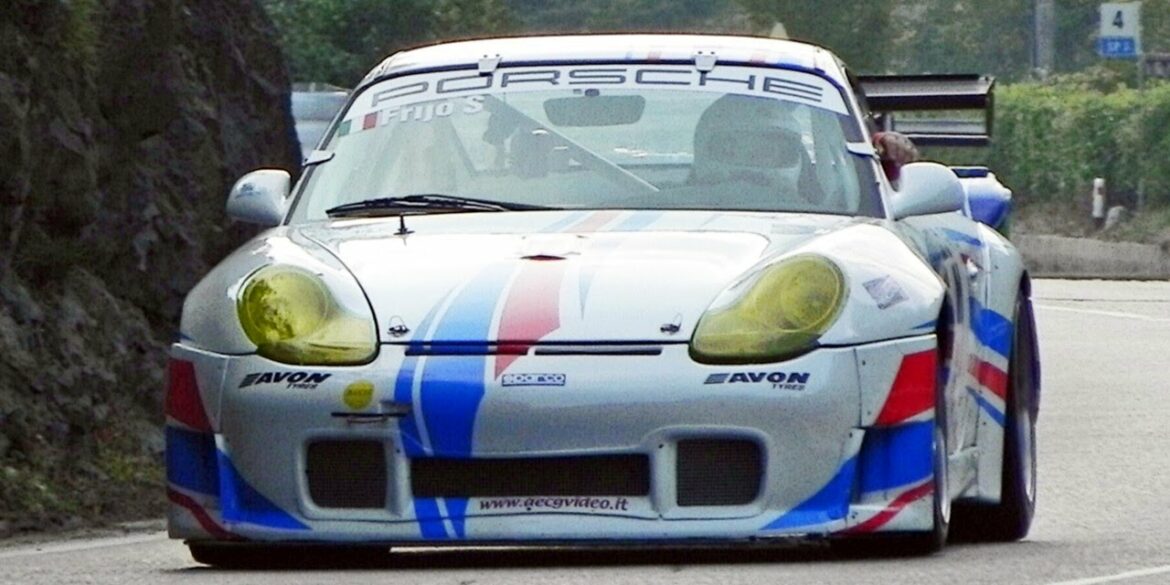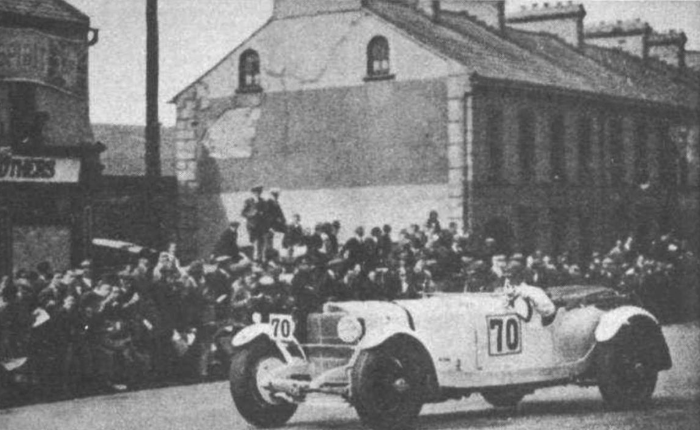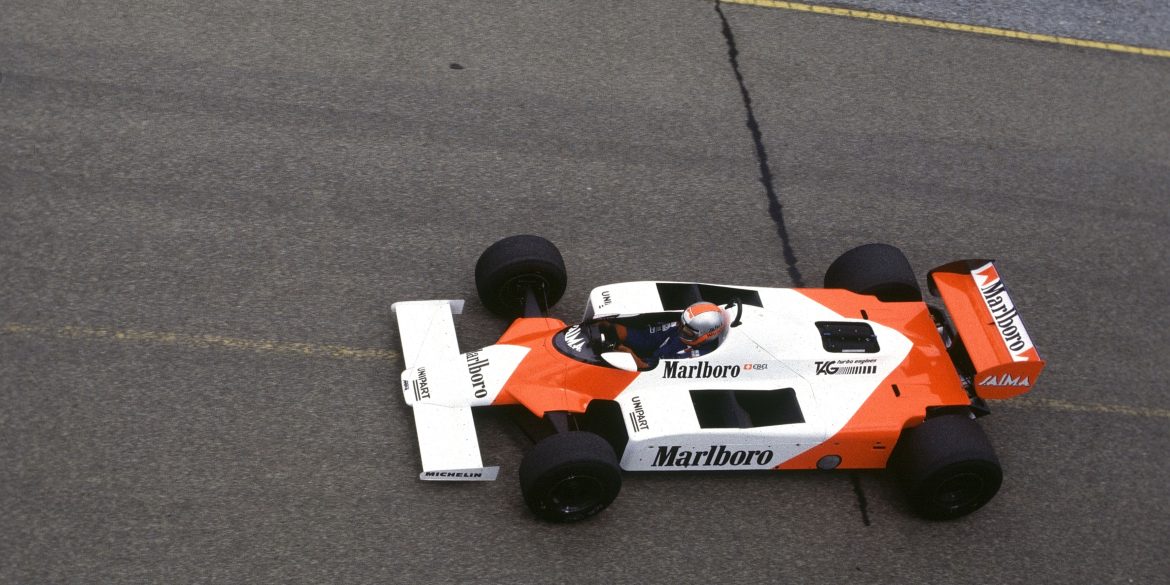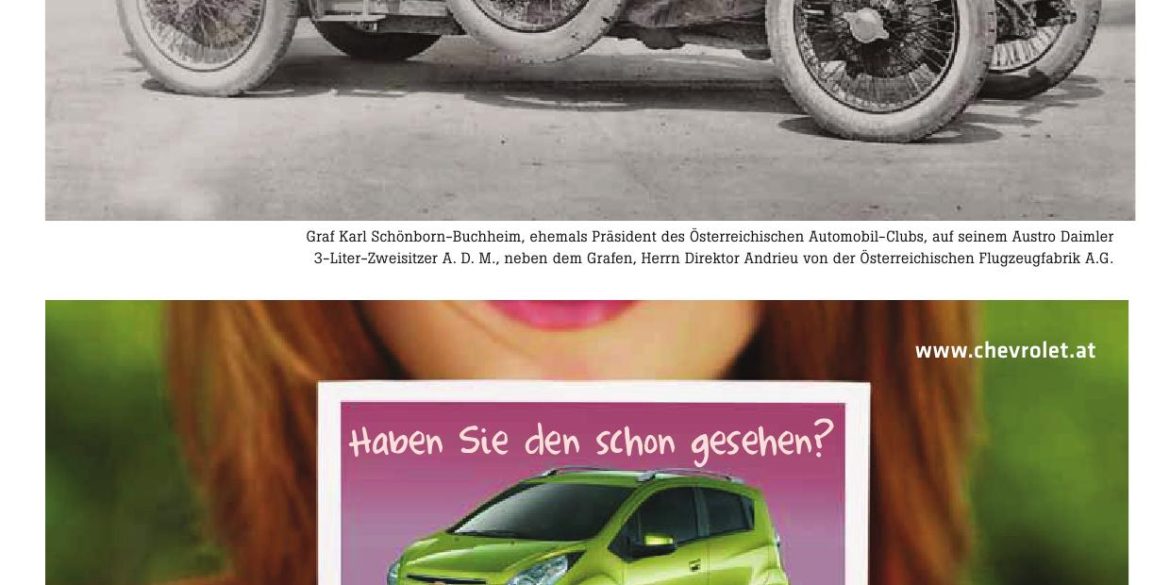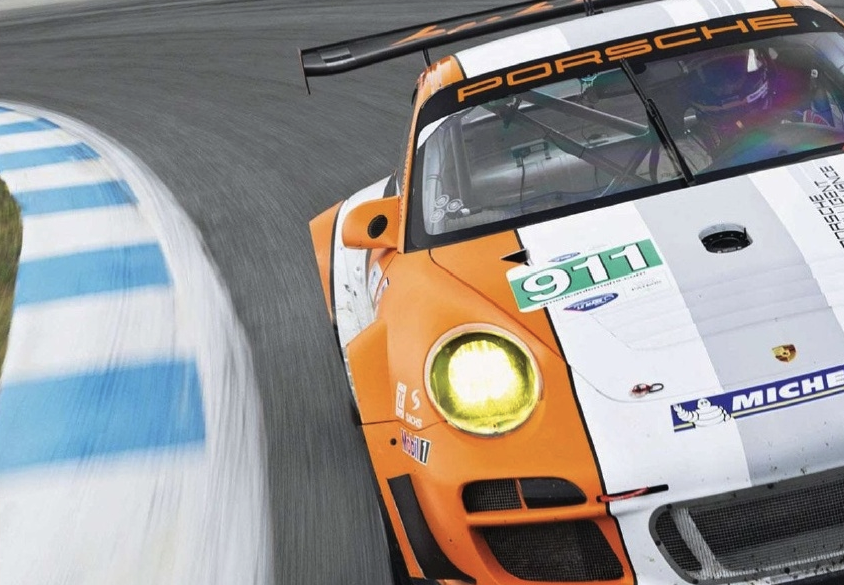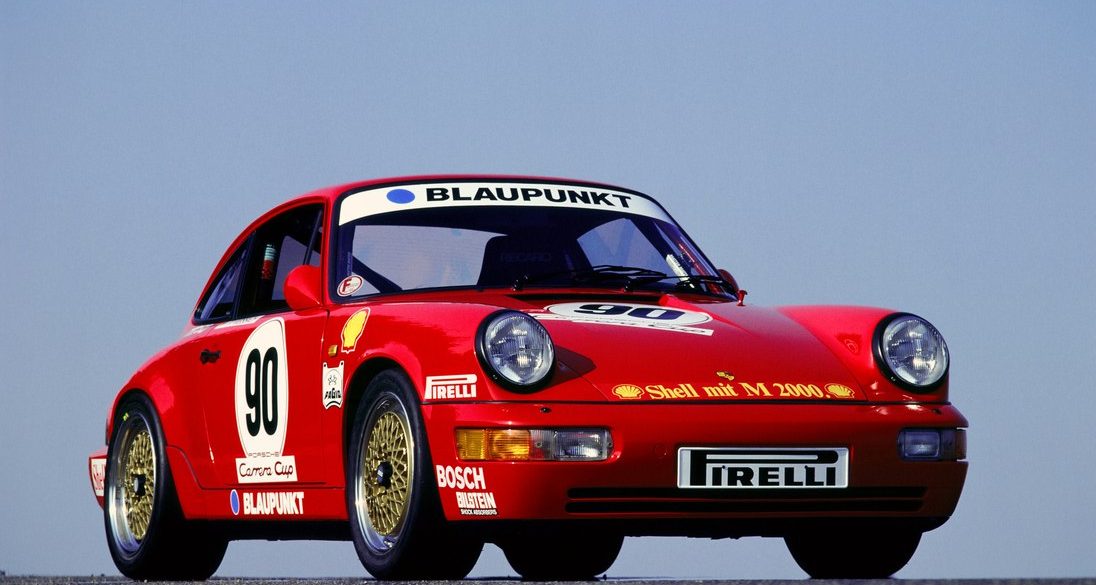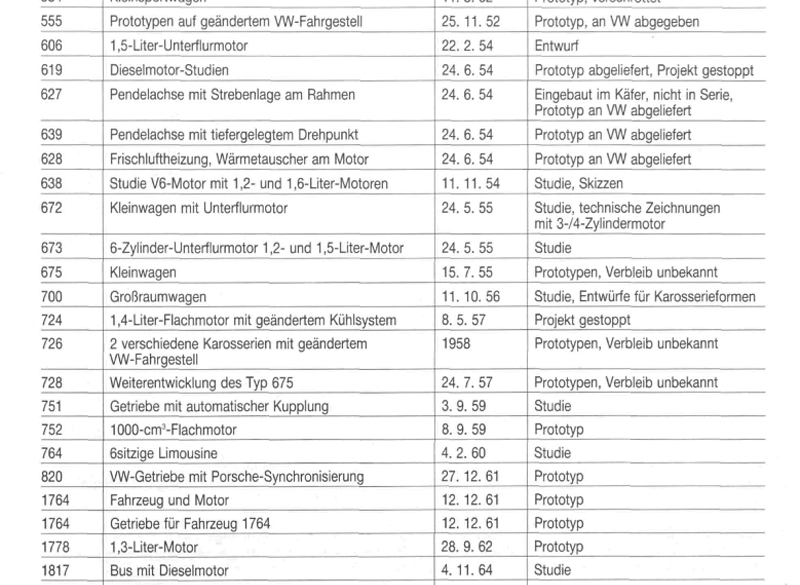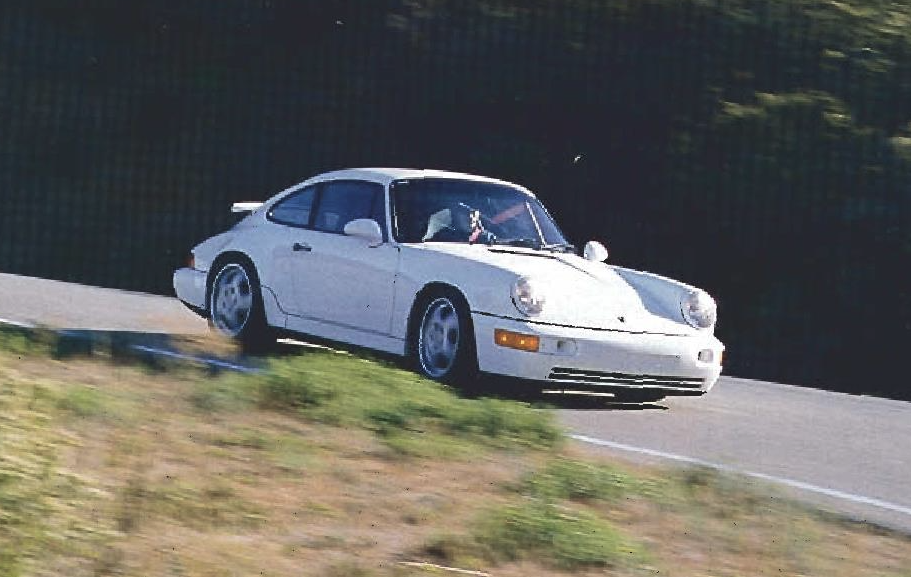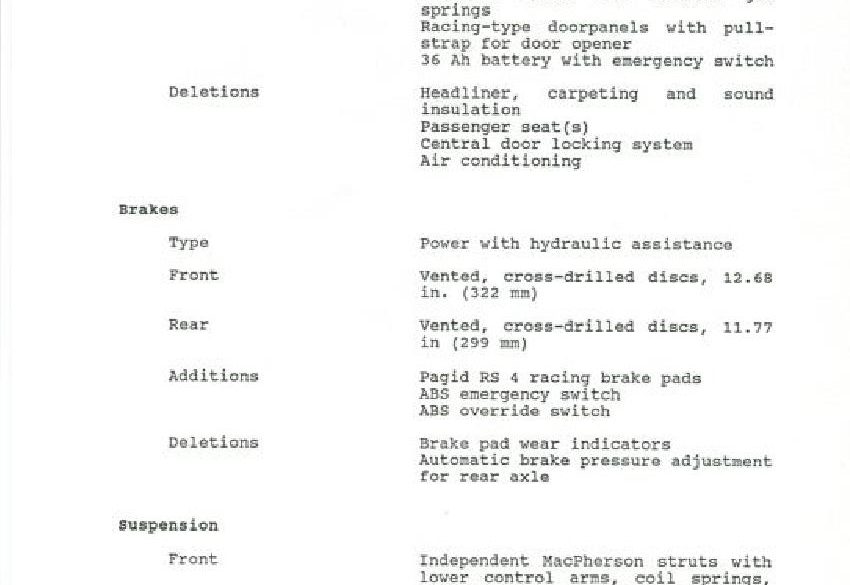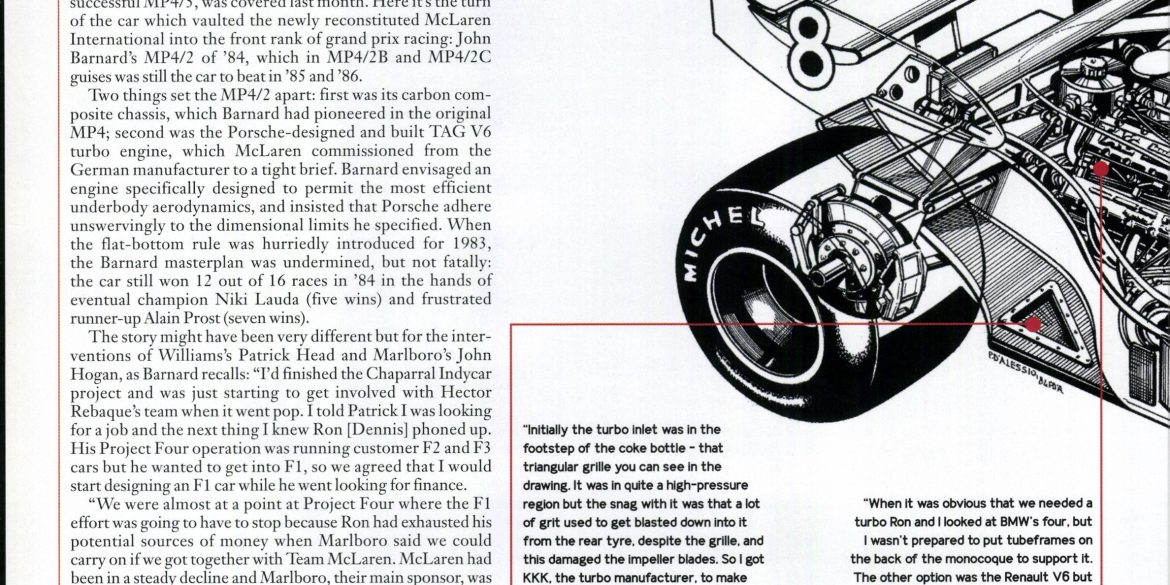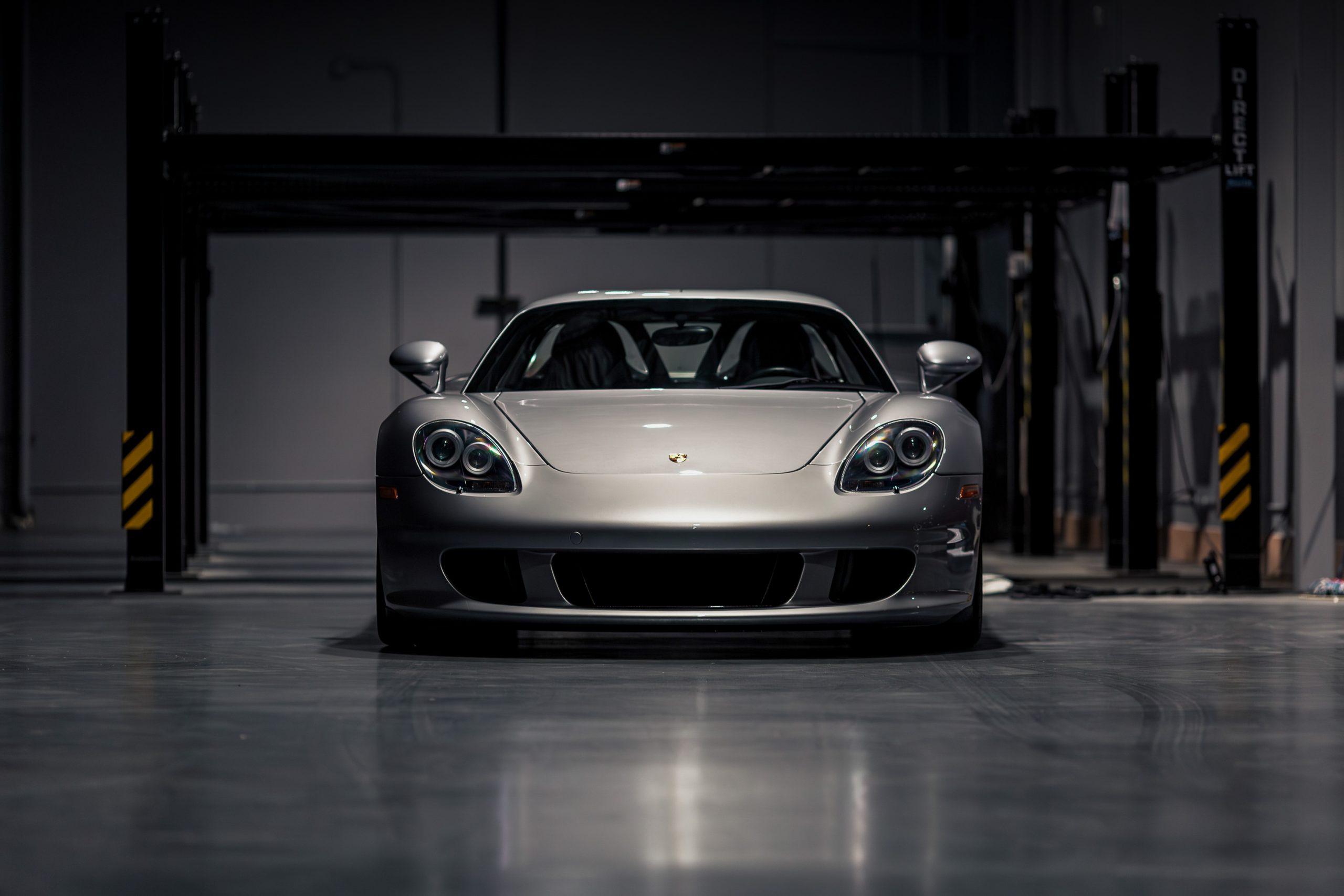The cars proceed into Spa city during the 2017 Spa 24 Hour drivers’ parade The Total 24 Hours of Spa, a round of the Blancpain GT Series, gets underway this weekend on the famous Belgian circuit. This round is also the second in the four-race Intercontinental GT Challenge which is...
‘Production line racer’ – in their quest to produce 25 running cars in time for the inspection by the FIA, Porsche pulled out all the stops as evidenced by the activity in this image The name Porsche is synonymous with the world’s toughest endurance race, the 24 Hours of Le...
Our guys from the CAR magazine decided to pit the Ferrari 458 Speciale and Porsche 911 GT3 against each other to find out which is one is better overall. ...
What a wave of jubilation must have swept through the pit garage of the #92 Porsche RSR of Michael Christensen and Kevin Estre when they realised that they had secured pole position in the 2017 Nürburgring 6 Hour. Class pole was set by Christensen on Saturday with a time of...
This weekend, the World Endurance Championship (WEC) moves to the Nürburgring in western Germany for round 4 of the series. In the LMP1 class, Porsche leads with 111 points, 24.5 points ahead of Toyota (86.5 points). [Ed – The ACO originally issued the incorrect championship points to Toyota after Le...
Video: Onboard with Patrick Pilet and Frederic Makowiecki in the #91 Porsche 911 RSR at the Le Mans 24H on 18/19 June 2017...
No Subscription? You’re missing out Get immediate ad-free access to all our premium content. Get Started Already a Member? Sign in to your account here....
Relive the magic of the Porsche Carrera Cup Le Mans 2017. A field of 61 identical cars raced at the legendary Circuit de la Sarthe, just hours before the start of the 24 Hours of Le Mans. Check it out here…...
Every year, during the Le Mans 24 Hours weekend, some other motor racing series shares the paddock and the race track with the 60 teams taking part at the race world’s famous endurance event. For the 2017 edition, there were two series to accompany the race week: Road to Le...
Official Daytona ’85 poster By 1981 at the earliest, and for sure by the 1983 season of sports car racing, it had become clear to most that the Porsche 935 was reaching the end of its useful racing life. While it had been a great car, it just could not...
There was great excitement in Porsche circles around the world, when it was announced earlier this year that the Italian Ferrari driver, Gianmaria Bruni, had split from his AF Corse Ferrari team and was to join the Porsche GTE ranks. His contract precluded him from racing for an opposition team inside six...
The 2017 Le Mans 24 Hour race will go down in history as one of the most dramatic in years. If you thought that last year’s race ended in dramatic fashion, then this year’s event was equal to or even more gripping than in 2016. Unavoidably, it involved the same...
The 962 C in the 1990 Le Mans driven by David Sears, Tiff Needell and Anthony Reid. It finished third overall Le Mans 1990 was a whole new ballgame. The circuit had changed drastically. The famous Mulsanne straight was now going to have two chicanes in the middle of it....
Held on the weekend of 3-4 June 2017, the test day for this year’s Le Mans was run under clear skies. It was an excellent opportunity for the teams to put their cars, drivers, personnel and systems through their paces ahead of the big day on 17-18 June. Below is...
Sixty-six years ago, on 24 June 1951, the first Porsche was pushed tentatively onto the starting grid of the 1951 Le Mans 24 Hour race. The lone, diminutive 356 SL would finish in a remarkable twentieth place overall. Fifty-one years ago, on 19 June 1966, the first Porsche 911 would...
Bob Garretson in #009 00030 during practice for the 1980 Daytona 24 hours. This is the original 1979 factory configuration on this car By the time that we reached the IMSA Riverside Los Angeles Times Grand Prix in April, the Dick Barbour Racing team’s IMSA GT championship season had been...
Born: 8 May 1981 Where: Hasselt, Belgium Lives: Waiblingen, Germany Height: 1.80m Career 2017 Porsche works driver 2016 Audi works driver, Winner FIA GT World Cup Macau, Winner Intercontinental GT Challenge, 1st Dubai 24 Hours, 1st Sepang 12 Hours, 3rd Blancpain GT Series 2015 Audi works driver, 1st Nürburgring 24...
Born: 7 February 1992 Where: Mainz, Germany Lives: Bingen, Germany Height: 1.81m Career 2017 Porsche works driver 2016 Porsche Junior, 1st Porsche Mobil 1 Supercup Championship, 1st Porsche Carrera Cup Deutschland Championship 2015 Porsche Junior, 2nd Porsche Mobil 1 Supercup Championship, Porsche Carrera Cup Deutschland Championship 2014 Porsche Junior, 1st...
Martin Raffauf and Chris Hill look under the car with the ACO inspectors. Mechanic Jeff Lateer looks on with the camera. Tech inspection went very well for the 935 as we had Annie Verney with us to “discuss” any issues with the ACO as we proceeded. The Garretson Developments Sports...
#1, Porsche Team, Porsche 919 Hybrid, driven by Neel Jani, Andre Lotterer, Nick Tandy at WEC 6 Hours of Spa-Francorchamps 2017, Spa-Francorchamps race circuit, on 06.05.2017 It was a case of ‘what might have been’ as the two LMP1 Porsche 919 Hybrids experienced frustrating delays during the Spa 6 Hour...
Born: 25 May 1981 Where: Hannover, Germany Lives: Würzburg, Germany Height: 1.80m Career 2017 Porsche works driver, 2nd Daytona 24 Hours (GTLM) 2016 BMW works driver IMSA WeatherTech SportsCar Championship (2 podiums), 5th Nürburgring 24 Hours (GT3), Spa 24 Hours Blancpain Endurance Championship 2015 BMW works driver, 2nd Tudor United...
Born: 19 November 1981 Where: Duisburg, Germany Lives: Tokyo, Japan Height: 1.84m Although it is his first year as a Porsche LMP1 works driver, German-born André Lotterer needs little by way of an introduction. Lotterer, it seems, was born to race, having attended races with his father from a young...
Having won the 2015 Le Mans 24 Hour race with Porsche’s LMP1 team, driver Nick Tandy returned to the Circuit de la Sarthe last year to compete in the GTE Pro category. Mobil 1 The Grid caught up with Tandy to find out more about the Le Mans challenge and...
Porsche made a solid start to their 2017 WEC campaign, when the #2 LMP1 919 Hybrid (Bernhard/Bamber/Hartley) finished second in the top class followed by the #1 car in third place (Jani/Lotterer/Tandy). On the podium in the GTE Pro class, was the #91 RSR of Richard Lietz/Fred Makowiecki, when they...
#2, Porsche Team, Porsche 919 Hybrid, driven by Timo Bernhard, Earl Bamber, Brendon Hartley, during at FIA WEC 6 Hours of Silverstone 2017, Silverstone International Circuit, on 14.04.2017 It was a dry day at Silverstone on the first day of practice for this year’s WEC opening round at Silverstone. This,...
Chassis #000 00023 gets a check out on the autobahn by the Kremer brothers prior to Le Mans. Manfred Kremer drove it Erwin Kremer and Jerry Woods followed in a 928 chase car. Le Mans in 1980 was in kind of a transition. The Porsche 935 K3 had won the...
Philippe Alméras is the owner of Team Martinet by Alméras, one of the main Porsche team contenders in the 2017 racing calendar: Porsche Mobil 1 Supercup, Porsche Carrera Cup France, French GT4 Championship, VdeV Endurance Series, Porsche Club Racing and more. The name Alméras is linked from the very beginning...
Le Mans 24 Hours, 20/21 June 1964: Porsche 904/8 of Edgar Barth/Herbert Linge before the start of the race The introduction of the Type 904 heralded a new direction for Porsche’s race cars. Gone were the aluminium-bodied racers, as the 904 spearheaded a generation of GRP-bodied Porsches that culminated in...
Hans Stuck at the wheel on the way to winning Sebring in 1986. His co-drivers were Jo Gartner and Bob Akin. (Porsche 962 chassis #962-113) The 2.6-litre Porsche 956 which raced in the 1982/1983 seasons in Europe, was not accepted for racing in the USA, and so the 962 was...
2016 represented the year of the 30th consecutive season of the French Porsche Carrera Cup, one of the most competitive and longest-running one-make series in Europe. It is a fact that a number of Porsche Carrera Cup France champions are today official Porsche factory drivers: Patrick Pilet (champion in 2007),...
Bob Akin’s 935, one of the major protagonists in the 1983 Sebring 12 Hour race. It was driven by Bob Akin, John O’Steen and Dale Whittington and finished second overall. (©Brian Cleary) The 1983 Sebring 12 Hour was an epic event. Back then the race was run on the ‘old...
The #6 Barbour, Stommelen, Mears car, a 935-78 (935-77A), enters the Sebring front straight. While this was the fastest car there, it was delayed for some laps with a brake issue and finished fourth The IMSA season in the 1970s always started with the two toughest races on the calendar,...
The #912 works Porsche 911 RSR GTLM driven by Kévin Estre, Laurens Vanthoor and Richard Lietz being prepared ahead of the start in the 2017 Rolex Daytona 24 Hours The 2017 Daytona 24 hours has an interesting field and mix of cars, especially in the GT class. Although I have...
This Porsche 996 GT3 R is being offered for sale by Coys of London. When it was launched in 1998, the Porsche Type 996 represented one of the most significant changes to the 911 model range in its (then) 35-year history. While all previous road-going 911 models had been powered...
The 2016 Porsche Carrera Cup GB season began at Silverstone, on a cold, bright day in March. For the first time, all the teams, cars and drivers who would light up six circuits over eight weekends and 16 rounds were together in one place. The class of 2016 was a...
The 2016 motorsport season ended successfully for Porsche at the Intercontinental GT Challenge 12-hour race on the Sepang International Circuit on 11 December 2016. Second place went to Earl Bamber, Patrick Pilet and Nick Tandy, while their teammates clinched fifth place at the final round. With a spectacular charge through...
This is the Peter Gregg car (chassis #930 770 0952) as shown at the Porsche Rennsport 2015. In early 1977, the Peter Gregg car sent home from the Atlanta IMSA race due to ‘illegal modifications.’ This photo shows the car restored with 935 fenders as it was run later in...
Porsche’s 1981 Daytona 24-Hour winning poster A lot of people have asked me over the years, what is it like to plan, prepare for and run a 24-hour sports car race. It has changed somewhat over the years from the days of the Porsche 935 at the 1981 Daytona 24...
This extreme road sports car based on the Porsche Boxster is reminiscent of the groundbreaking Porsche 550 racing coupé that started in 1953 at the 24 Hours of Le Mans. The front and rear bonnet open in opposite directions and fuel is supplied via a central nozzle at the front. At the rear is an eight-cylinder engine with excessive sound development.
The rear of the world’s most-produced GT racing car now houses a 4-litre, six-cylinder flat engine for even more drive. Thanks to thoroughbred motorsport technology, the compact engine with direct fuel injection delivers peak performance of 357 kW (485 hp). A range of innovative details also improve efficiency in addition to engine performance, ensuring even better durability of the naturally aspirated engine in racing mode and reduced maintenance costs.
The #8 Kremer K3 Porsche 935 entered by Dick Barbour and driven by John Fitzpatrick, in the pit lane ahead of the 1980 Norisring race. The author, Martin Raffauf, is at the car’s right front wheel The Race for the Pork Cutlets… The end of June 1980 was a busy...
Having had experience in single-seater, GT & LMP1 racing, Marc Lieb has become an integral part of the Porsche Motorsport programme. Mobil 1 The Grid caught up with the #2 919 Hybrid driver to learn more about his career, the current WEC title battle and Porsche’s incredible 24 Hours of...
Porsche is returning to LMP1 for the first time since 1998. We took a look back at why the German manufacturer’s return is so important. No Subscription? You’re missing out Get immediate ad-free access to all our premium content. Get Started Already a Member? Sign in to your account here....
Hotchkis Racing was one of the most successful privateer racing teams in the 1980s and its Wynn’s Porsche 962 was an icon of the Camel IMSA GTP series. Father and son team of John Hotchkis and John Hotchkis, Jr. along with Jim Adams successfully campaigned this amazing car against some...
It’s out, the new model Porsche 911 RSR was launched this evening at the LA Auto Show. Porsche will tackle the 2017 racing season with its all-out newly developed GT racer which features an ultra-modern, flat-six unit positioned in front of the rear axle. The four-litre, extremely light aggregate features...
Porsche will unveil the new 911 RSR racing car at the Los Angeles Auto Show (November 18-27). The eagerly awaited and much speculated about 2017 racer will put to rest all the theories circulating on the new RSR. Absolute secrecy has prevailed as to the car’s layout and engine, but...
Congratulations and good luck to Porsche Road & Race on the launch of this exciting new website, celebrating something that is also very close to my heart – the powerful, stunning and exquisite Porsche marque! I’m delighted to be a columnist, and I hope you’ll find them a lot different...
All four of the Dick Barbour Racing Porsche 935s line up in the pits ahead of the 1979 Le Mans race, each with the Stars and Stripes draped over the rear wing. From left to right: #73 935/77 (934½) – John Hotchkiss, Bob Kirby and Bob Harmon; #72 935/77 –...
The name Porsche is synonymous with the world’s toughest endurance race, the 24-Hours of Le Mans, boasting an unbroken run of 65 years. During this time, they have amassed 18 victories. This is Part I of their story… The Veuillet/Mouche 356 SL proved reliable on its Le Mans debut in...
No Subscription? You’re missing out Get immediate ad-free access to all our premium content. Get Started Already a Member? Sign in to your account here....
The Epic Sound of 997 GT3 in Nature...
The Porsche 911 GT3 Cup is the racing version of the 911 GT3. In 2016, almost 320 of the near-standard racers, based on the seventh generation of the iconic 911 sports car, will be campaigned in the Porsche Mobil 1 Supercup, the national Carrera Cups as well as major GT3...
VIDEO: 1986 Porsche 962 At Laguna Seca During Monterey Motorsports Reunion Porsche 962 chassis 122 helped Dyson Racing to propel its team to the peak of IMSA’s GTP class in 1986, and with Skylar Robinson behind the wheel for the 2016 Rolex Monterey Motorsports Reunion, another interesting chapter has been added...
No Subscription? You’re missing out Get immediate ad-free access to all our premium content. Get Started Already a Member? Sign in to your account here....
Sub 10 Minute Pikes Peak Run in Porsche 911 GT3 Turbo Cup On the quest to break his own personal recordJeff Zwart attempts a sub-10 minute Pikes Peak run. With his 800 horsepower Porsche 911 GT3 Turbo Cup as his weapon for the 12.42 mile Pikes Peak International Hill Climb course, he...
No Subscription? You’re missing out Get immediate ad-free access to all our premium content. Get Started Already a Member? Sign in to your account here....
The 911 GT America was based on the 991 GT3 Cup. It was built exclusively for the United Sports Car Racing (USRC) series and its GT Daytona class for 2014. While the GT3 Cup had a 3.8-litre engine at the time, the GT America was fitted with a 4.0-litre unit developing 351 kW. The main visual difference is the rear spoiler made to fit the USRC rules. Like the GT3 Cup, the GT America has 380 mm steel brake rotors at the front axle with 6-piston fixed calipers.
Carrera RSR 3.0 Sounds Spectacular Porsche 911 Carrera RSR 3.0 in action! Natural Sound. 1974 Porsche 911 RSR 3.0 a historic Race car of Le Mans 24 Hours! 182.7 cu in. | 3.0 L. – 315 BHP (231.84 KW) @ 8000 RPM. Drivers: #96 – Santiago ORJUELA / Juan ORJUELA...
A-zug, Austro Daimler, B-zug, C-zug, Ferdinand Porsche, M17-80hp, Rabe, Zugwagen M12 In July 1906, 30-year-old Ferdinand Porsche, who had previously worked for the small Austrian company Lohner, joined Austro-Daimler as chief engineer. He brought with him his development of the so-called “mixed or hybrid drive”—the Mixte: an internal combustion engine...
No Subscription? You’re missing out Get immediate ad-free access to all our premium content. Get Started Already a Member? Sign in to your account here....
No Subscription? You’re missing out Get immediate ad-free access to all our premium content. Get Started Already a Member? Sign in to your account here....
No Subscription? You’re missing out Get immediate ad-free access to all our premium content. Get Started Already a Member? Sign in to your account here....
The new Porsche 911 GT3 Cup is powered by a 3.8-litre six-cylinder flat engine. It generates 460 hp (338 kW) at 7,500 revs, surpassing the predecessor by 10 hp. A six-speed dog-type gearbox developed by Porsche Motorsport which is operated via shift paddles at the steering wheel for the first time in a Porsche brand trophy race car transmits the power to the rear axle. The single piece race wheels with centre mount were also new.
We would like to thank Vladimir Kovalenko, Vlad Shaikhnurov, and Oleg Sidorov for their assistance in collecting this material. Teloché is a small town, founded in 832, located 15 km south of Le Mans and 3 km south of Mulsanne. Its main landmark is the Church of Notre-Dame-de-l’Épine, which forms...
Turn Up the Volume to the Perfect Flat 6 Screaming Sounds This video is about a couple of Porsche 996 GT3 RSs I saw during a few hillclimb races and a Red Bull livered 996 GT3 RSR I recorded at Monza Circuit. The RS is moved by a 3.6-liter flat-six...
No Subscription? You’re missing out Get immediate ad-free access to all our premium content. Get Started Already a Member? Sign in to your account here....
No Subscription? You’re missing out Get immediate ad-free access to all our premium content. Get Started Already a Member? Sign in to your account here....
No Subscription? You’re missing out Get immediate ad-free access to all our premium content. Get Started Already a Member? Sign in to your account here....
No Subscription? You’re missing out Get immediate ad-free access to all our premium content. Get Started Already a Member? Sign in to your account here....
No Subscription? You’re missing out Get immediate ad-free access to all our premium content. Get Started Already a Member? Sign in to your account here....
No Subscription? You’re missing out Get immediate ad-free access to all our premium content. Get Started Already a Member? Sign in to your account here....
No Subscription? You’re missing out Get immediate ad-free access to all our premium content. Get Started Already a Member? Sign in to your account here....
No Subscription? You’re missing out Get immediate ad-free access to all our premium content. Get Started Already a Member? Sign in to your account here....




